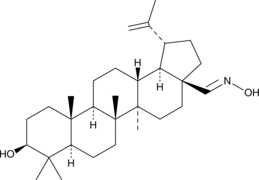Immunology/Inflammation
The immune and inflammation-related pathway including the Toll-like receptors pathway, the B cell receptor signaling pathway, the T cell receptor signaling pathway, etc.
Toll-like receptors (TLRs) play a central role in host cell recognition and responses to microbial pathogens. TLR4 initially recruits TIRAP and MyD88. MyD88 then recruits IRAKs, TRAF6, and the TAK1 complex, leading to early-stage activation of NF-κB and MAP kinases [1]. TLR4 is endocytosed and delivered to intracellular vesicles and forms a complex with TRAM and TRIF, which then recruits TRAF3 and the protein kinases TBK1 and IKKi. TBK1 and IKKi catalyze the phosphorylation of IRF3, leading to the expression of type I IFN [2].
BCR signaling is initiated through ligation of mIg under conditions that induce phosphorylation of the ITAMs in CD79, leading to the activation of Syk. Once Syk is activated, the BCR signal is transmitted via a series of proteins associated with the adaptor protein B-cell linker (Blnk, SLP-65). Blnk binds CD79a via non-ITAM tyrosines and is phosphorylated by Syk. Phospho-Blnk acts as a scaffold for the assembly of the other components, including Bruton’s tyrosine kinase (Btk), Vav 1, and phospholipase C-gamma 2 (PLCγ2) [3]. Following the assembly of the BCR-signalosome, GRB2 binds and activates the Ras-guanine exchange factor SOS, which in turn activates the small GTPase RAS. The original RAS signal is transmitted and amplified through the mitogen-activated protein kinase (MAPK) pathway, which including the serine/threonine-specific protein kinase RAF followed by MEK and extracellular signal related kinases ERK 1 and 2 [4]. After stimulation of BCR, CD19 is phosphorylated by Lyn. Phosphorylated CD19 activates PI3K by binding to the p85 subunit of PI3K and produce phosphatidylinositol-3,4,5-trisphosphate (PIP3) from PIP2, and PIP3 transmits signals downstream [5].
Central process of T cells responding to specific antigens is the binding of the T-cell receptor (TCR) to specific peptides bound to the major histocompatibility complex which expressed on antigen-presenting cells (APCs). Once TCR connected with its ligand, the ζ-chain–associated protein kinase 70 molecules (Zap-70) are recruited to the TCR-CD3 site and activated, resulting in an initiation of several signaling cascades. Once stimulation, Zap-70 forms complexes with several molecules including SLP-76; and a sequential protein kinase cascade is initiated, consisting of MAP kinase kinase kinase (MAP3K), MAP kinase kinase (MAPKK), and MAP kinase (MAPK) [6]. Two MAPK kinases, MKK4 and MKK7, have been reported to be the primary activators of JNK. MKK3, MKK4, and MKK6 are activators of P38 MAP kinase [7]. MAP kinase pathways are major pathways induced by TCR stimulation, and they play a key role in T-cell responses.
Phosphoinositide 3-kinase (PI3K) binds to the cytosolic domain of CD28, leading to conversion of PIP2 to PIP3, activation of PKB (Akt) and phosphoinositide-dependent kinase 1 (PDK1), and subsequent signaling transduction [8].
References
[1] Kawai T, Akira S. The role of pattern-recognition receptors in innate immunity: update on Toll-like receptors[J]. Nature immunology, 2010, 11(5): 373-384.
[2] Kawai T, Akira S. Toll-like receptors and their crosstalk with other innate receptors in infection and immunity[J]. Immunity, 2011, 34(5): 637-650.
[3] Packard T A, Cambier J C. B lymphocyte antigen receptor signaling: initiation, amplification, and regulation[J]. F1000Prime Rep, 2013, 5(40.10): 12703.
[4] Zhong Y, Byrd J C, Dubovsky J A. The B-cell receptor pathway: a critical component of healthy and malignant immune biology[C]//Seminars in hematology. WB Saunders, 2014, 51(3): 206-218.
[5] Baba Y, Matsumoto M, Kurosaki T. Calcium signaling in B cells: regulation of cytosolic Ca 2+ increase and its sensor molecules, STIM1 and STIM2[J]. Molecular immunology, 2014, 62(2): 339-343.
[6] Adachi K, Davis M M. T-cell receptor ligation induces distinct signaling pathways in naive vs. antigen-experienced T cells[J]. Proceedings of the National Academy of Sciences, 2011, 108(4): 1549-1554.
[7] Rincón M, Flavell R A, Davis R A. The Jnk and P38 MAP kinase signaling pathways in T cell–mediated immune responses[J]. Free Radical Biology and Medicine, 2000, 28(9): 1328-1337.
[8] Bashour K T, Gondarenko A, Chen H, et al. CD28 and CD3 have complementary roles in T-cell traction forces[J]. Proceedings of the National Academy of Sciences, 2014, 111(6): 2241-2246.
Targets for Immunology/Inflammation
- Cyclic GMP-AMP Synthase(1)
- Apoptosis(137)
- 5-Lipoxygenase(18)
- TLR(106)
- Papain(2)
- PGDS(1)
- PGE synthase(26)
- SIKs(10)
- IκB/IKK(83)
- AP-1(2)
- KEAP1-Nrf2(47)
- NOD1(1)
- NF-κB(265)
- Interleukin Related(129)
- 15-lipoxygenase(2)
- Others(10)
- Aryl Hydrocarbon Receptor(35)
- CD73(16)
- Complement System(46)
- Galectin(30)
- IFNAR(19)
- NO Synthase(78)
- NOD-like Receptor (NLR)(37)
- STING(84)
- Reactive Oxygen Species(434)
- FKBP(14)
- eNOS(4)
- iNOS(24)
- nNOS(21)
- Glutathione(37)
- Adaptive Immunity(144)
- Allergy(129)
- Arthritis(25)
- Autoimmunity(134)
- Gastric Disease(64)
- Immunosuppressants(27)
- Immunotherapeutics(3)
- Innate Immunity(411)
- Pulmonary Diseases(76)
- Reactive Nitrogen Species(43)
- Specialized Pro-Resolving Mediators(42)
- Reactive Sulfur Species(24)
Products for Immunology/Inflammation
- Cat.No. Nom du produit Informations
-
GC35412
Asperulosidic Acid
L'acide aspérulosidique (ASPA), un glycoside iridoÏde bioactif, est extrait des herbes de Hedyotis diffusa Willd.
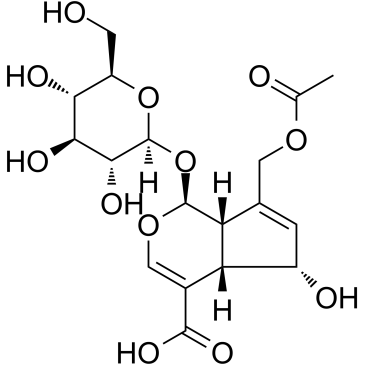
-
GC42860
Aspochalasin D
Aspochalasin D is a co-metabolite originally isolated from A.
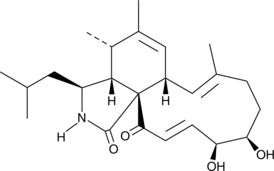
-
GC46886
Aspyrone
A fungal metabolite with diverse biological activities
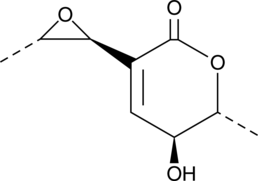
-
GC31350
Astaxanthin
L'astaxanthine, le caroténoÏde alimentaire rouge, est un antioxydant efficace et puissant par voie orale.
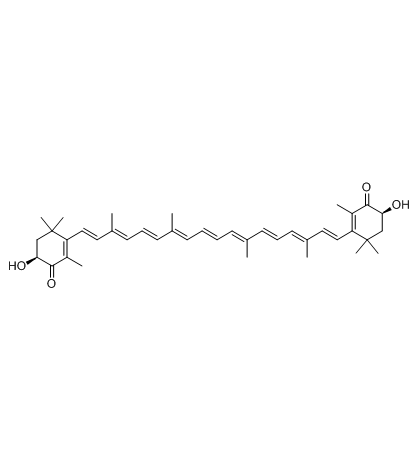
-
GC68702
Astegolimab
Astegolimab (MSTT 1041A; RG 6149) est un anticorps monoclonal humain de type IgG2 qui bloque la signalisation de l'IL-33 en ciblant le récepteur ST2. Astegolimab présente un potentiel pour la recherche sur les maladies pulmonaires obstructives chroniques (COPD).
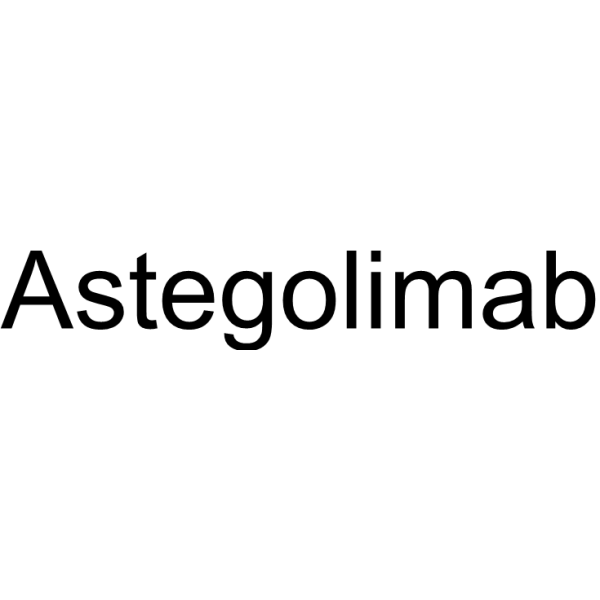
-
GC41640
Asterriquinol D dimethyl ether
L'éther diméthylique d'asterriquinol D est un métabolite fongique qui peut inhiber les lignées cellulaires de myélome de souris NS-1 avec une CI50 de 28 μg/mL.
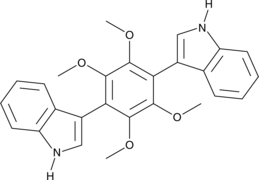
-
GN10415
Astilbin
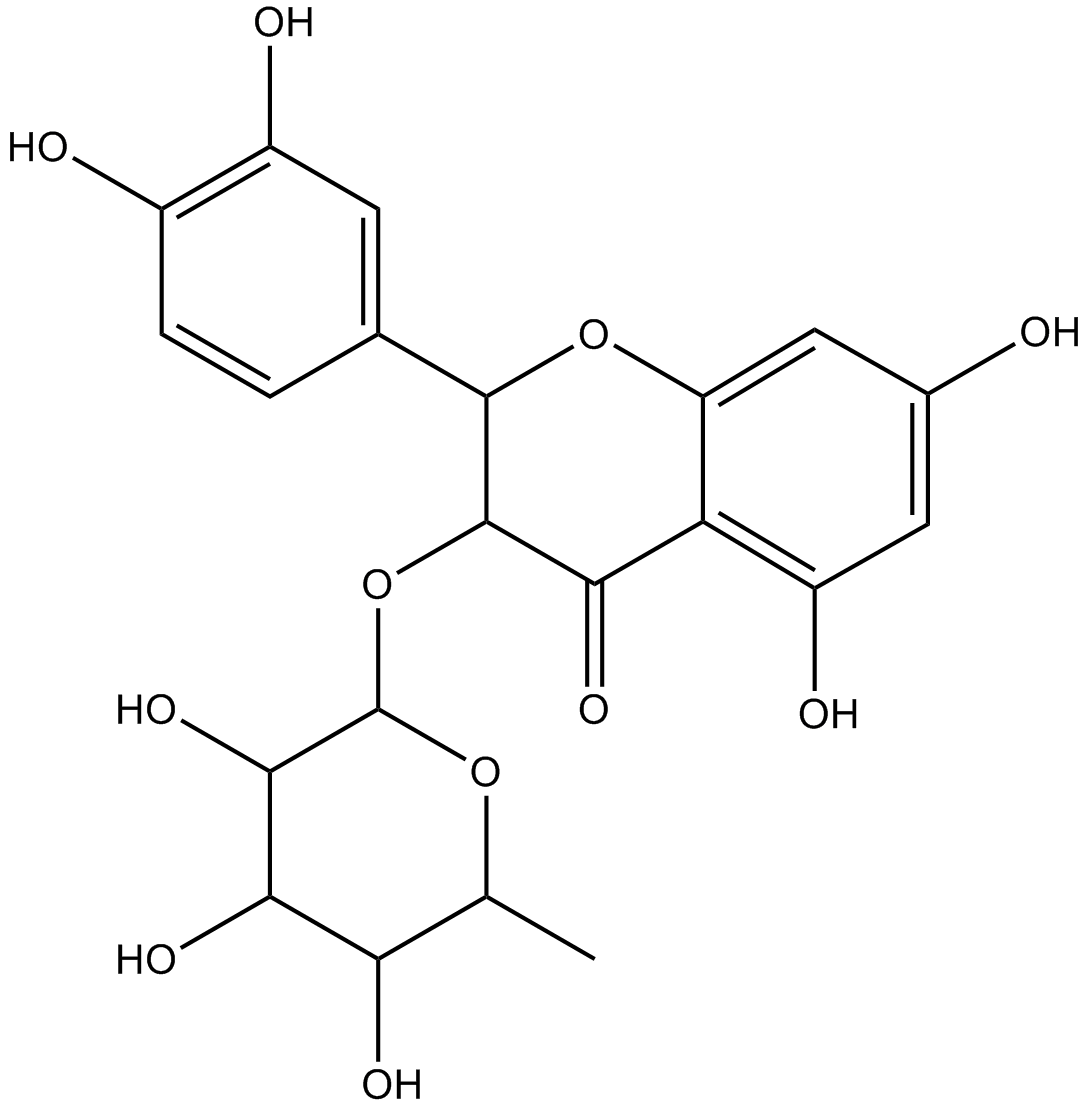
-
GC42863
Asukamycin
Asukamycin is polyketide isolated from the S.
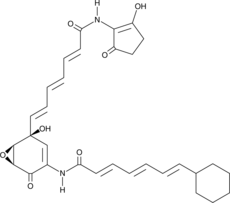
-
GC32457
Asymmetric dimethylarginine
La diméthylarginine asymétrique est un inhibiteur endogène de l'oxyde nitrique synthase (NOS) et fonctionne comme un marqueur de la dysfonction endothéliale dans un certain nombre d'états pathologiques.
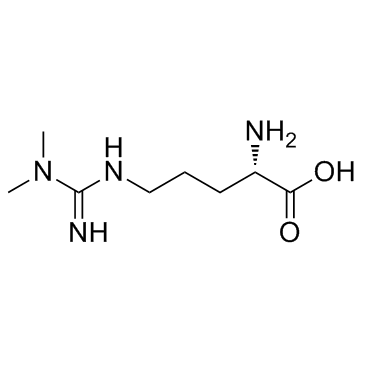
-
GC46091
Aszonapyrone A
L'aszonapyrone A est un métabolite produit par Aspergillus zonatus.
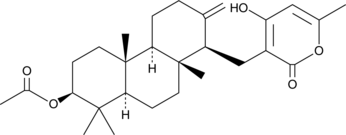
-
GC39554
AT2 receptor agonist C21
L'agoniste des récepteurs AT2 C21 est un agoniste sélectif des récepteurs AT2 de l'angiotensine II de type médicamenteux avec des valeurs de Ki de 0,4 nM et> 10 μM pour le récepteur AT2 et le récepteur AT1, respectivement .
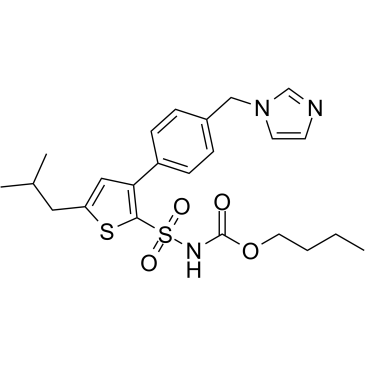
-
GC62334
AT791
AT791 est un inhibiteur puissant et biodisponible des TLR7 et TLR9 par voie orale.
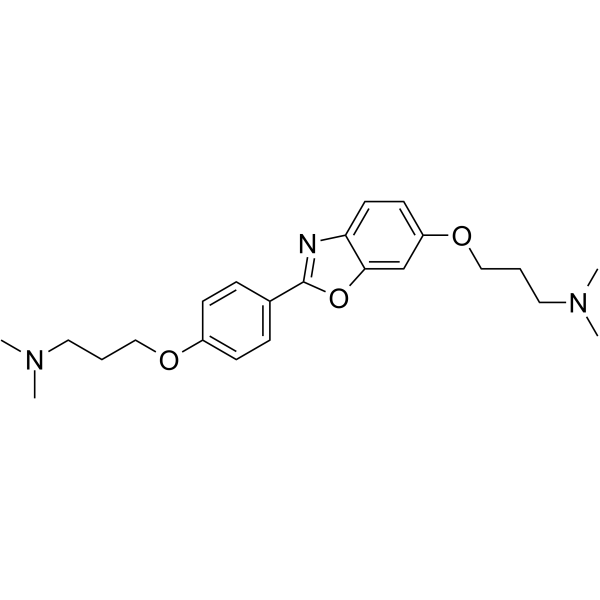
-
GC46887
Atazanavir-d6
An internal standard for the quantification of atazanavir
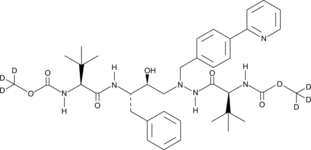
-
GC12537
ATB-337
L'ATB-337 est une molécule hybride d'un donneur d'H2S et du diclofénac AINS.
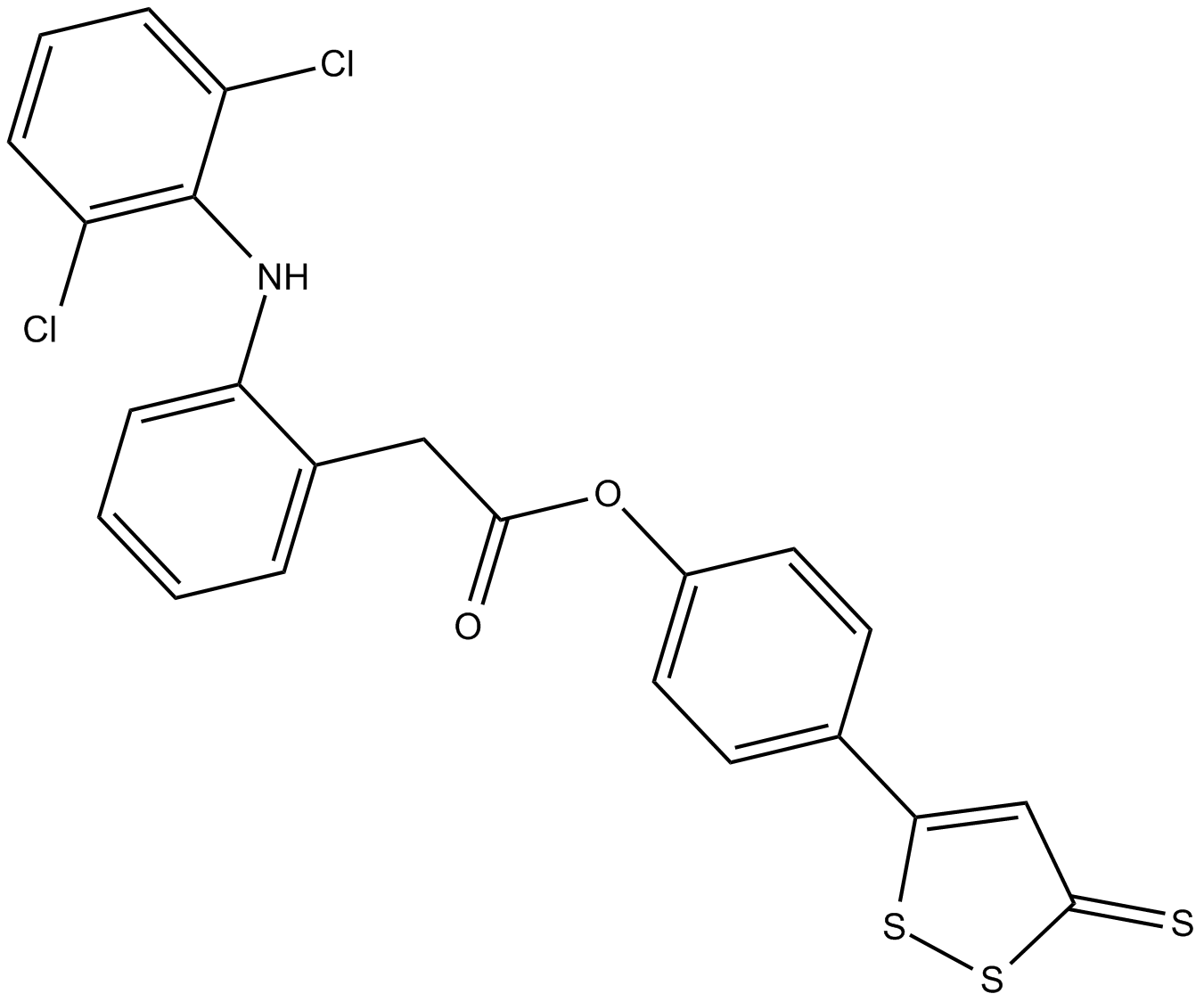
-
GC16245
ATB-343
hybrid molecule of an H2S donor and the NSAID indomethacin
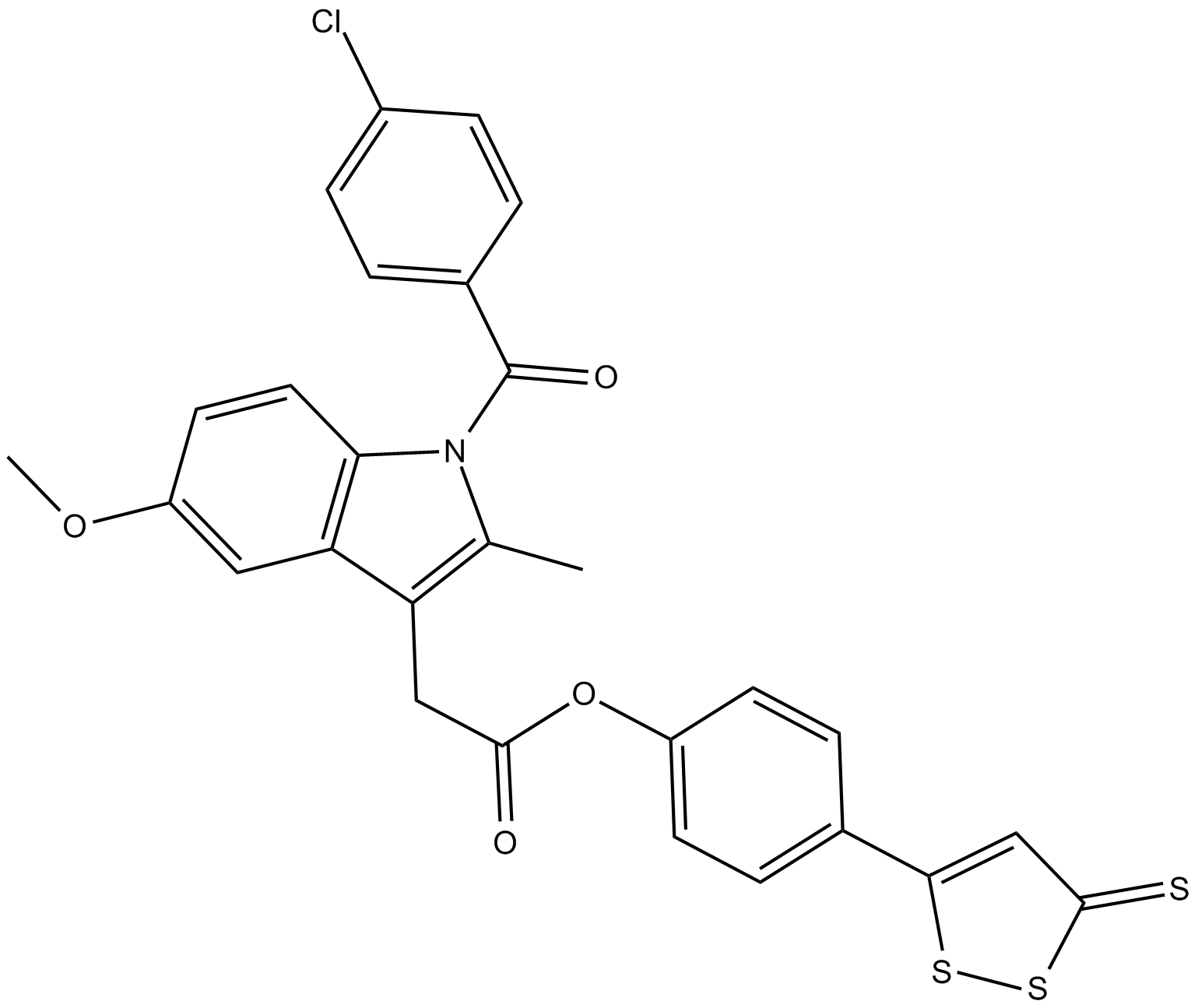
-
GC46892
ATRA-BA Hybrid
A prodrug form of all-trans retinoic acid and butyric acid

-
GN10627
Atractylenolide I
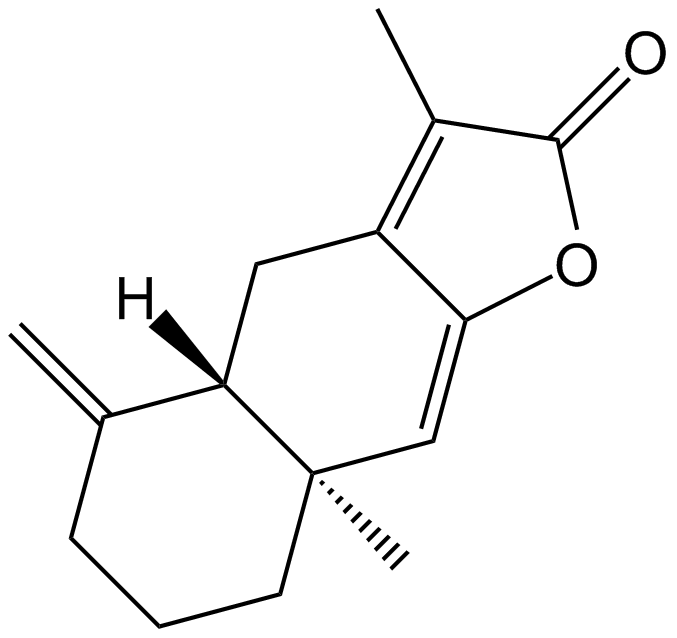
-
GC48925
Aureonitol
A fungal metabolite
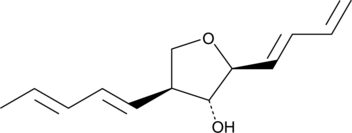
-
GC41490
Aureusimine B
Aureusimine B, also known as phevalin, is a natural pyrazinone produced by certain fungi and by Staphylococcus spp., including S.
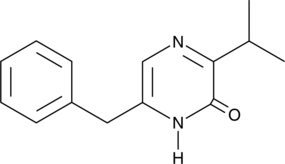
-
GC46895
Aurintricarboxylic Acid (ammonium salt)
A protein synthesis inhibitor with diverse biological activities
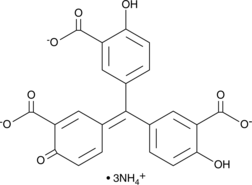
-
GC40005
Aurodox
Aurodox is a polyketide antibiotic originally isolated from S.

-
GC49646
Aurothioglucose (hydrate)
A TrxR inhibitor
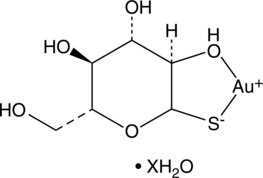
-
GC42877
AUY954
AUY954 is an orally bioavailable and selective agonist of the sphingosine-1-phosphate receptor 1 (S1P1; EC50 = 1.2 nM for stimulating GTPγS binding to S1P1 in CHO cells).

-
GC32486
AVE-3085
AVE-3085 est un puissant activateur endothélial de l'oxyde nitrique synthase, utilisé pour le traitement des maladies cardiovasculaires.
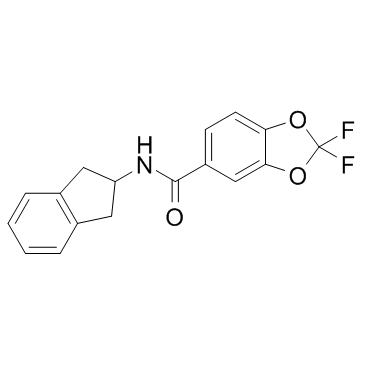
-
GC42880
Avenanthramide-C methyl ester
Avenanthramide-C methyl ester is an inhibitor of NF-κB activation that acts by blocking the phosphorylation of IKK and IκB (IC50 ~ 40 μM).
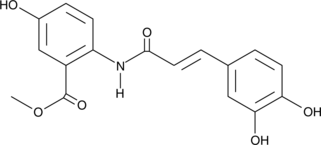
-
GC45388
Averantin
L'averantine est le métabolite mineur du champignon Cercospora arachidicola.

-
GC42881
Avermectin B1a aglycone
Avermectin B1a aglycone is an aglycone form of the anthelmintic and insecticide avermectin B1a.
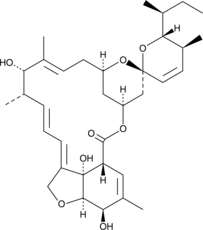
-
GC42882
Avermectin B1a monosaccharide
Avermectin B1a monosaccharide is a macrolide anthelmintic and monosaccharide form of avermectin B1a.
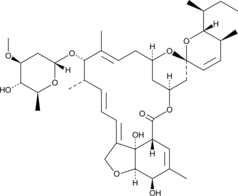
-
GC45984
Avilamycin A
An antibiotic

-
GC48511
Avrainvillamide
Avrainvillamide ((+)-Avrainvillamide) est un alcaloÏde naturel aux effets antiprolifératifs, se lie au chaperon nucléaire nucléophosmine, une protéine oncogène proposée qui est surexprimée dans de nombreuses tumeurs humaines différentes.
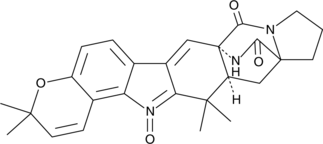
-
GC42885
AX 048
The group IVA phospholipase A2 (PLA2), known as calcium-dependent cytosolic PLA2 (cPLA2), selectively releases arachidonic acid from membrane phospholipids, playing a central role in initiating the synthesis of prostaglandins and leukotrienes.

-
GC35440
AX-024
AX-024 est un inhibiteur de premier ordre disponible par voie orale de l'interaction TCR-Nck qui inhibe sélectivement l'activation des lymphocytes T déclenchée par le TCR avec une IC50 ~ 1 nM.
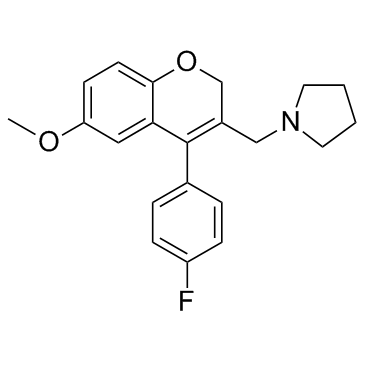
-
GC19046
AX-024 hydrochloride
Le chlorhydrate d'AX-024 est un inhibiteur de premier ordre disponible par voie orale de l'interaction TCR-Nck qui inhibe sélectivement l'activation des lymphocytes T déclenchée par le TCR avec une IC50 ~ 1 nM.
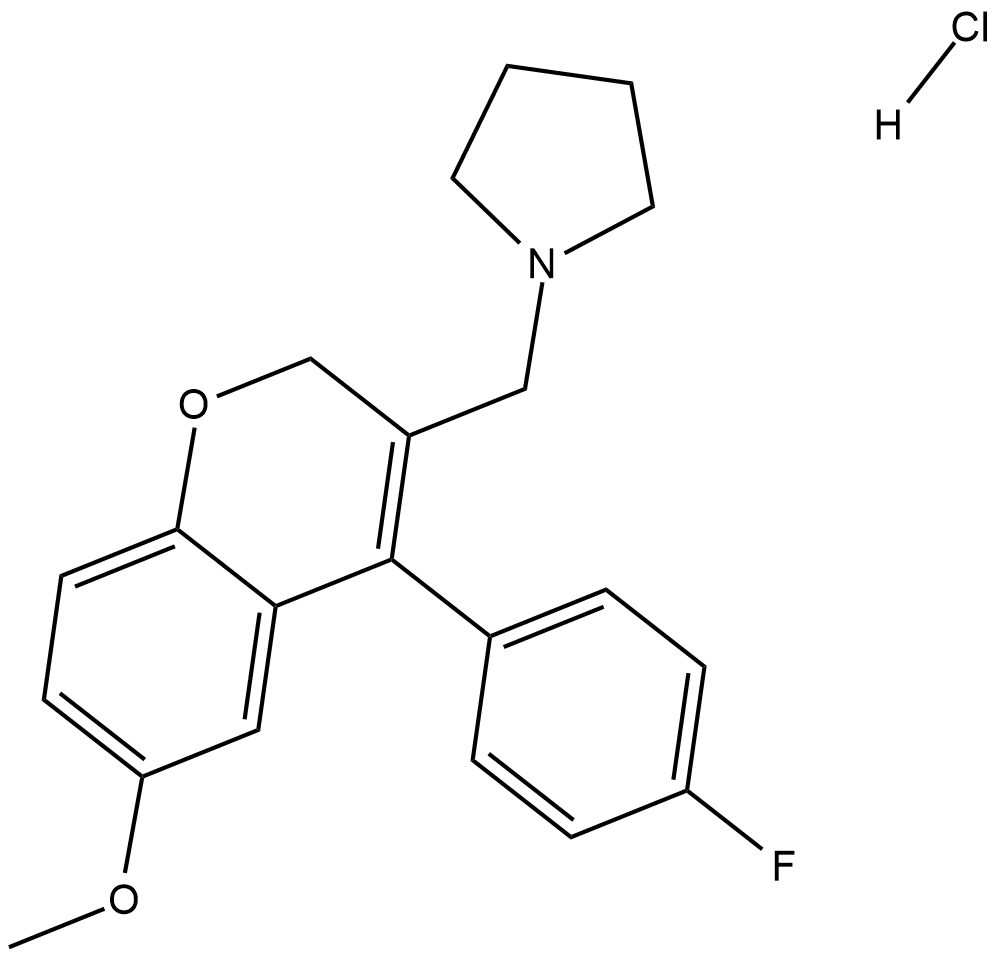
-
GC65283
AXC-715 trihydrochloride
Le trichlorhydrate d'AXC-715 (T785) est un double agoniste TLR7/TLR8, extrait du brevet WO2020168017 A1.
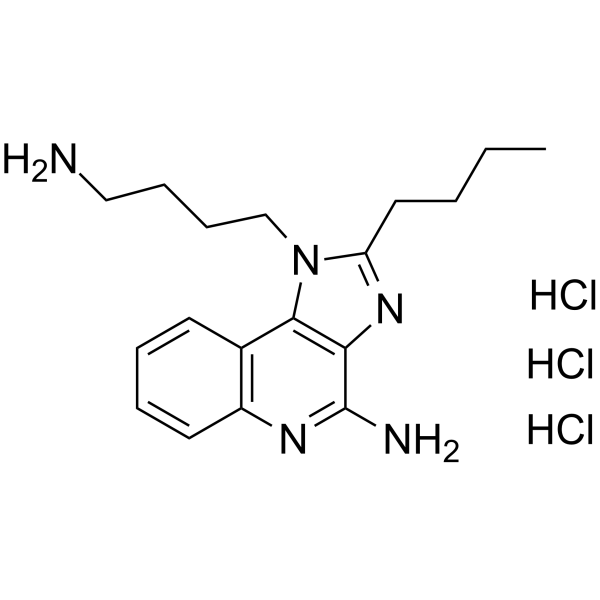
-
GC64938
AZD-7648
L'AZD-7648 est un puissant inhibiteur sélectif de l'ADN-PK, actif par voie orale, avec une IC50 de 0,6 nM. L'AZD-7648 induit l'apoptose et présente une activité antitumorale.
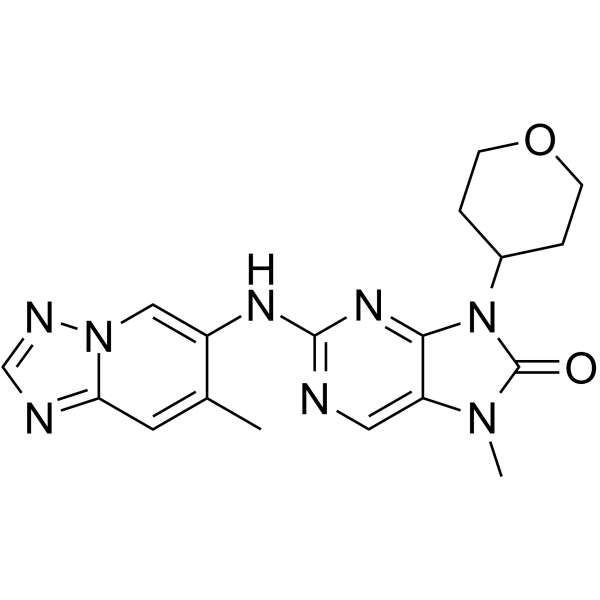
-
GC10135
AZD3264
AZD3264 est un inhibiteur sélectif IkB-kinase IKK2.
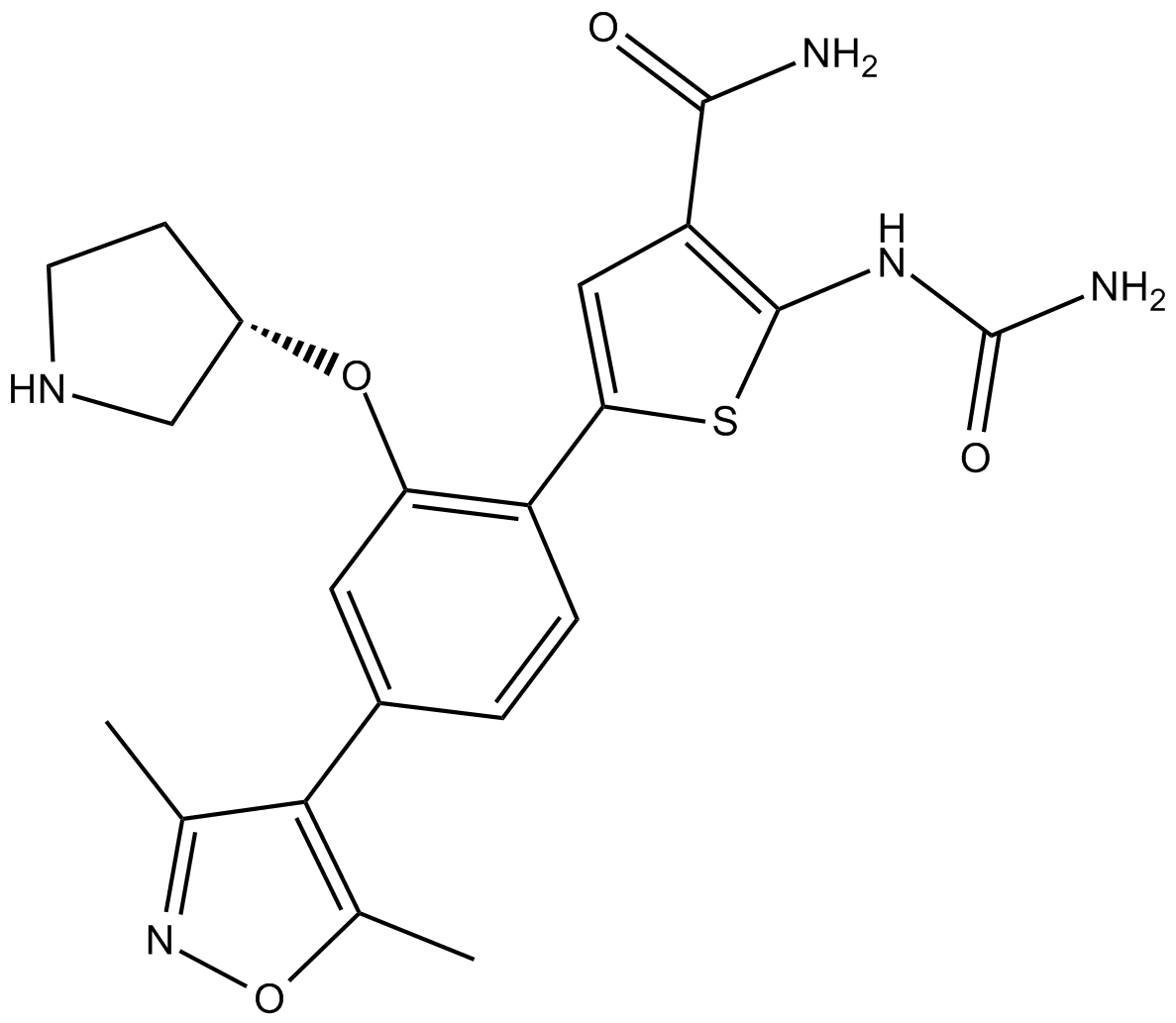
-
GC62488
AZD8848
AZD8848 est un agoniste antidrogue sélectif du récepteur Toll-like 7 (TLR7) développé pour la recherche sur l'asthme et la rhinite allergique.
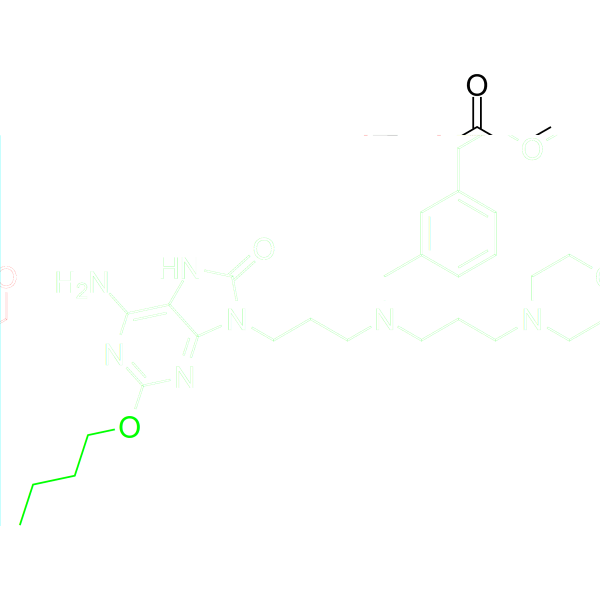
-
GC49057
Azelastine-13C-d3 (hydrochloride)
An internal standard for the quantification of azelastine
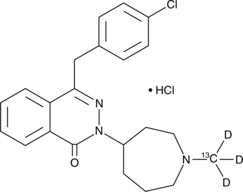
-
GC42891
azido-FTY720
Azido-FTY720 est un analogue photoactivable du FTY720.

-
GC46903
Azithromycin-d3
L'azithromycine-d3 (CP 62993-d3) est l'azithromycine marquée au deutérium.
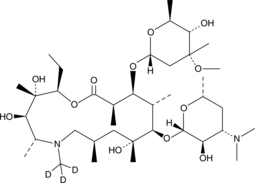
-
GC46904
Azoxystrobin
L'azoxystrobine est un fongicide β-méthoxyacrylate À large spectre.
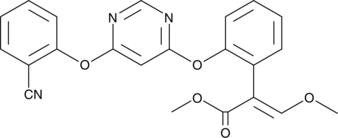
-
GC60616
AZT triphosphate
L'AZT triphosphate (3'-azido-3'-désoxythymidine-5'-triphosphate) est un métabolite triphosphate actif de la zidovudine (AZT).
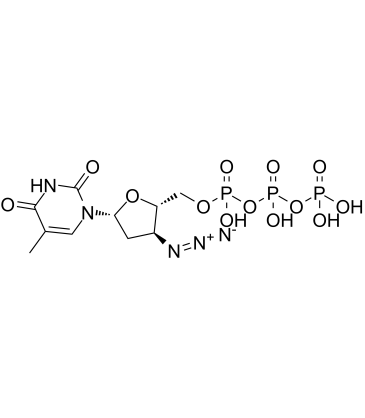
-
GC60617
AZT triphosphate TEA
L'AZT triphosphate TEA (3'-azido-3'-désoxythymidine-5'-triphosphate TEA) est un métabolite triphosphate actif de la zidovudine (AZT).
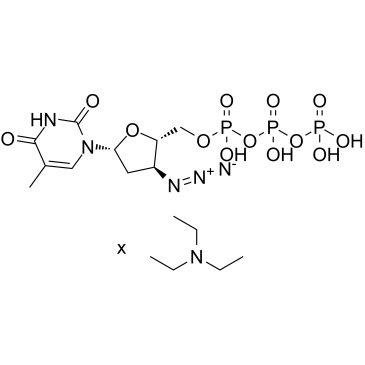
-
GC45795
Aztreonam-d6
An internal standard for the quantification of aztreonam
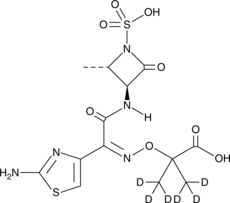
-
GC39280
B022
B022 est un inhibiteur puissant et sélectif de la kinase inductrice de NF-κB (NIK) (Ki de 4,2 nM ; IC50 = 15,1 nM).
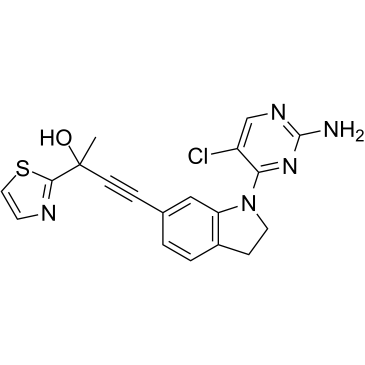
-
GC18580
B355252
Le B355252, une petite molécule de phénoxy thiophène sulfonamide, est un puissant agoniste des récepteurs du NGF.
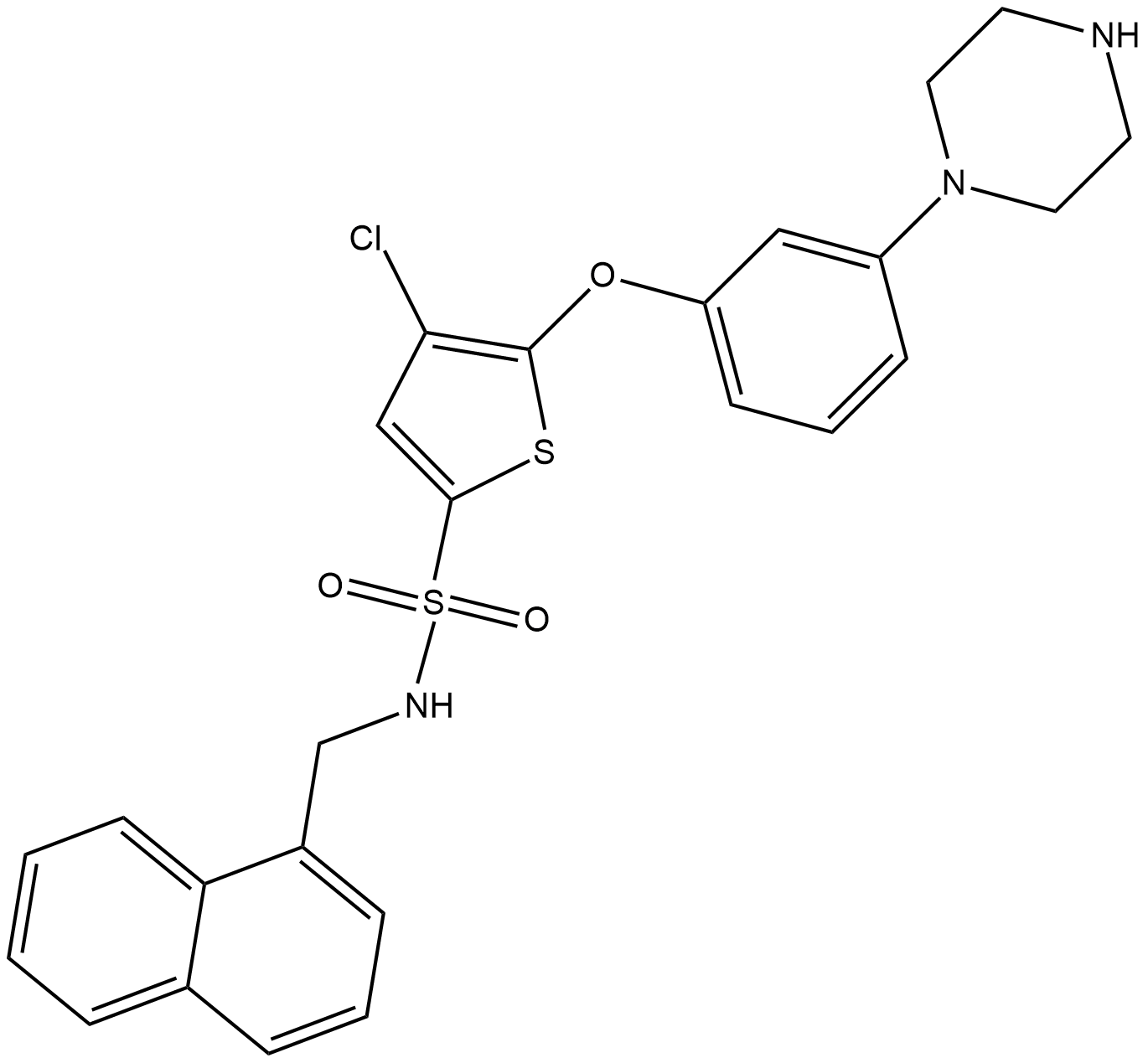
-
GC42895
Bacillosporin C
Bacillosporin C is an oxaphenalenone dimer originally isolated from T.
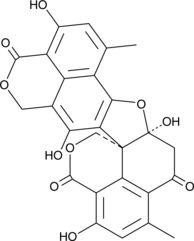
-
GC49793
Bacitracin A (technical grade)
A polypeptide antibiotic
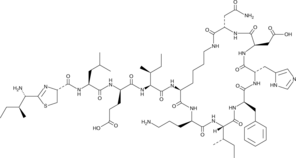
-
GC46905
Bacitracin Complex
A mixture of bacitracin polypeptides in complex with copper
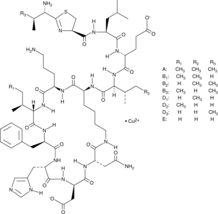
-
GC45938
Bacopaside X
Le bacopaside X se trouve dans Bacopa monnieri et montre une affinité de liaison avec le récepteur D1 .
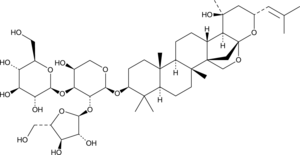
-
GC49302
Bactenecin (bovine) (trifluoroacetate salt)
A cationic peptide
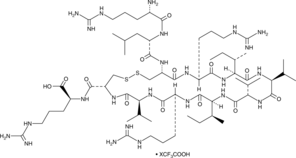
-
GN10018
Baicalin
Un flavonoïde avec des activités biologiques diverses.
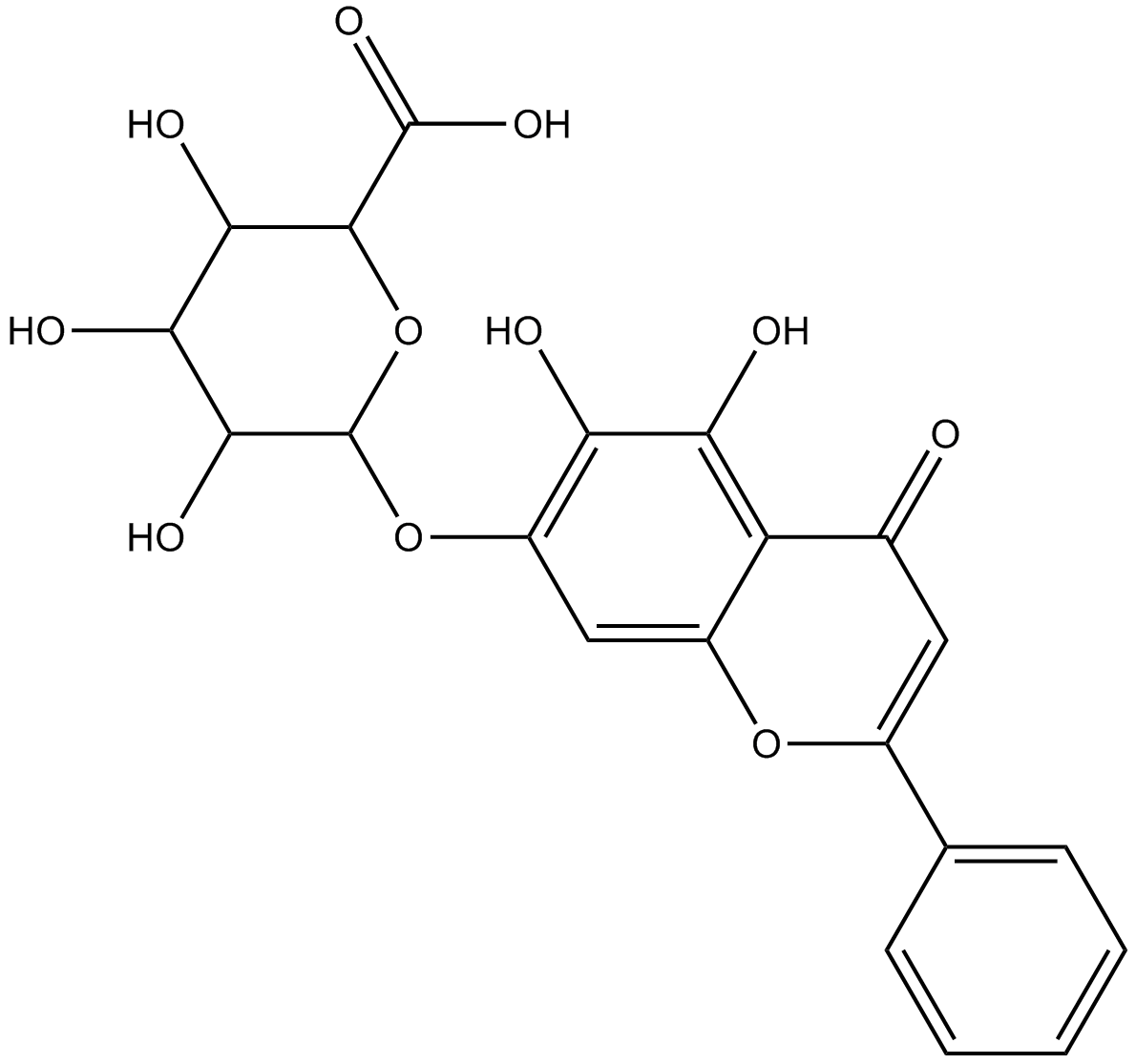
-
GC52344
Bak BH3 (72-87) (human) (trifluoroacetate salt)
A Bak-derived peptide

-
GC18126
Balsalazide
Le balsalazide pourrait supprimer la carcinogenèse associée À la colite en modulant la voie IL-6/STAT3.
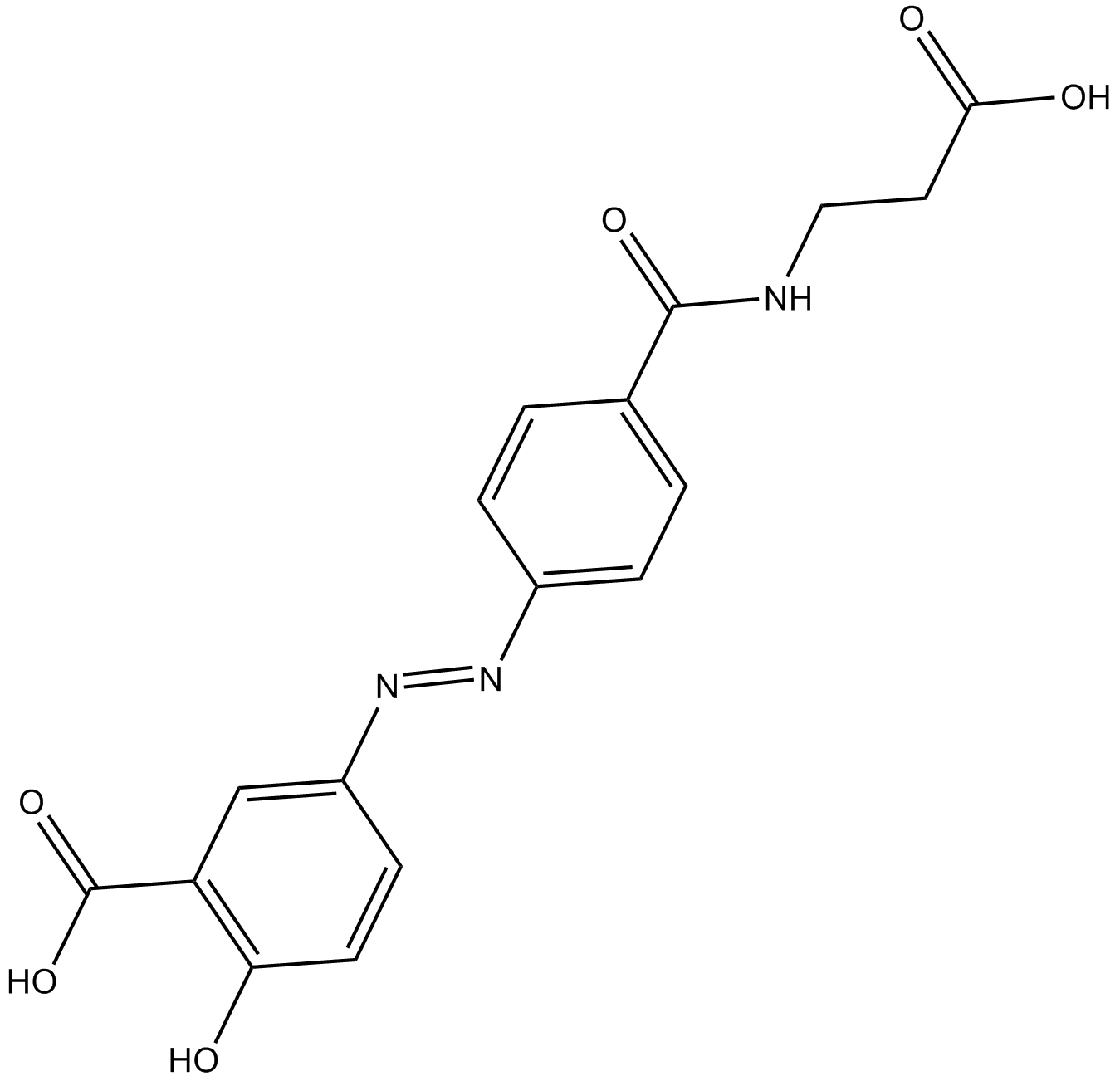
-
GC35466
Balsalazide sodium hydrate
L'hydrate de sodium de balsalazide pourrait supprimer la carcinogenèse associée À la colite en modulant la voie IL-6/STAT3.
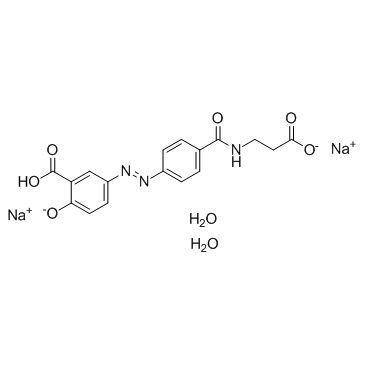
-
GC17574
BAPTA
BAPTA est un chélateur sélectif du calcium.
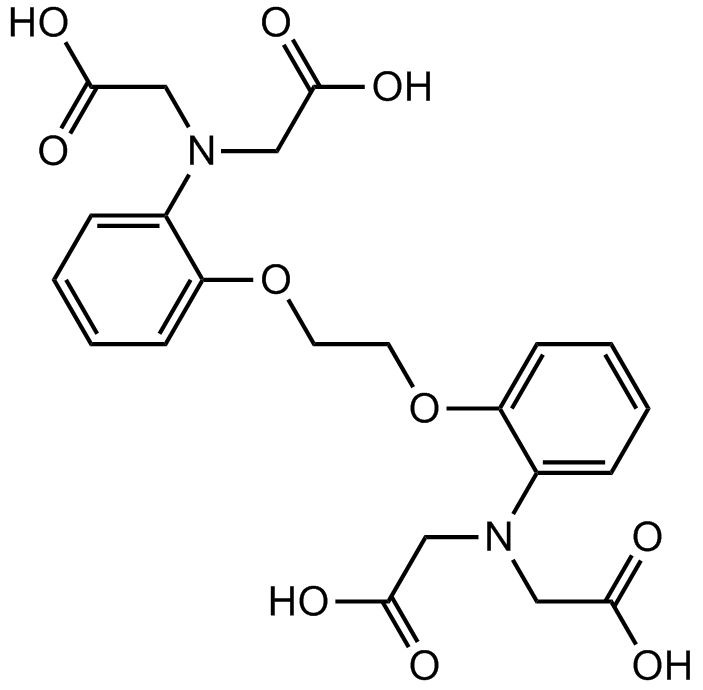
-
GC18313
BAR501 Impurity
BAR501 impurity is an impurity found in the preparation of BAR501 that acts as an agonist of the G protein-coupled bile acid-activated receptor (GP-BAR1).
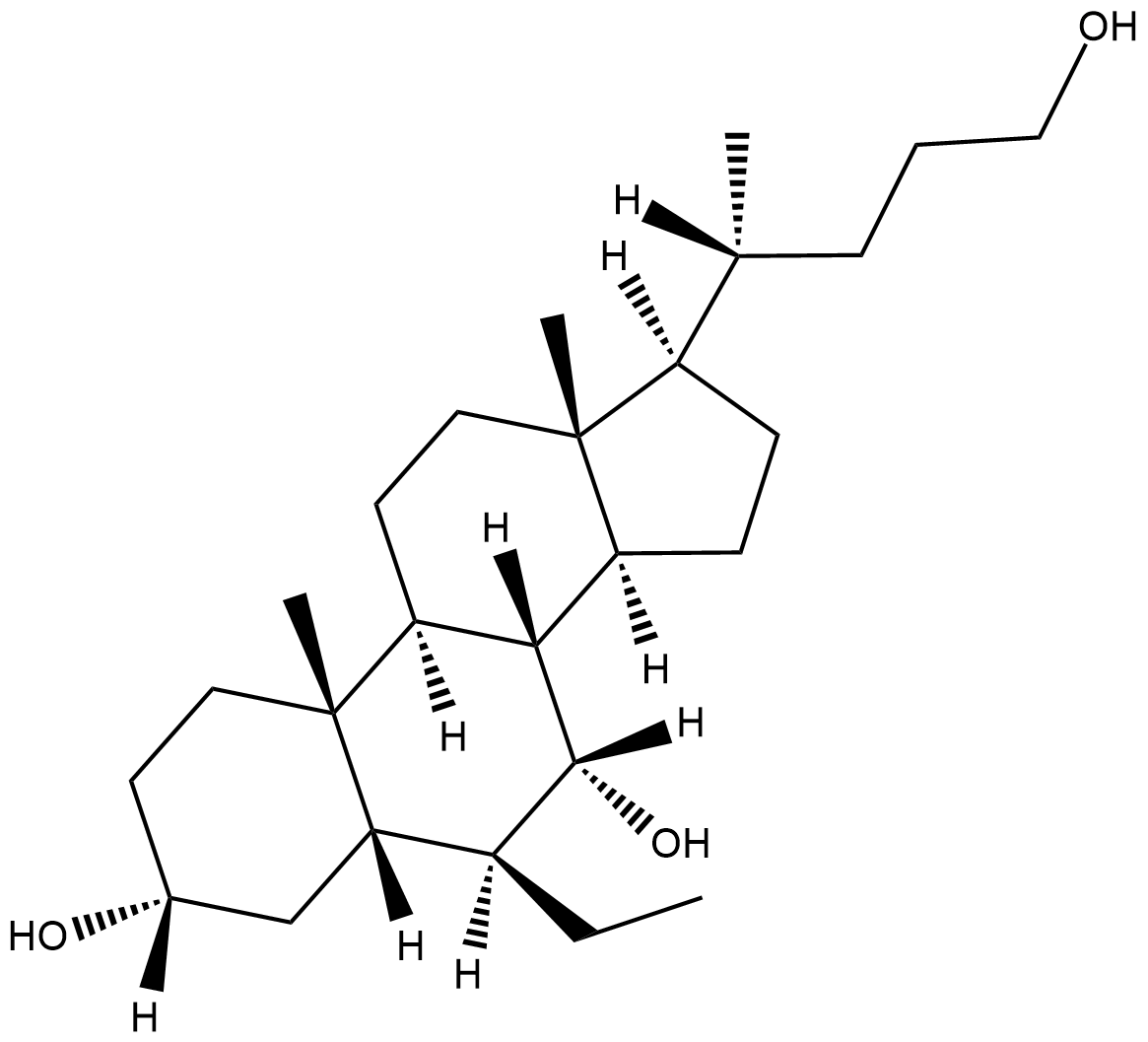
-
GC66331
Basiliximab
Le basiliximab (CHI 621) est un anticorps monoclonal chimère murin/humain recombinant anti-récepteur de l'interleukine-2. Le basiliximab peut être utilisé pour la recherche de transplantation rénale.

-
GC52476
Bax Inhibitor Peptide V5 (trifluoroacetate salt)
A Bax inhibitor
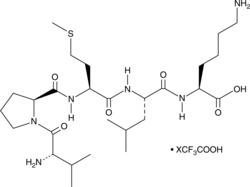
-
GC10345
Bay 11-7085
BAY 11-7085 (BAY 11-7083) est un inhibiteur de l'activation de NF-κB et de la phosphorylation de IκBα; il stabilise IκBα avec une IC50 de 10 μM.
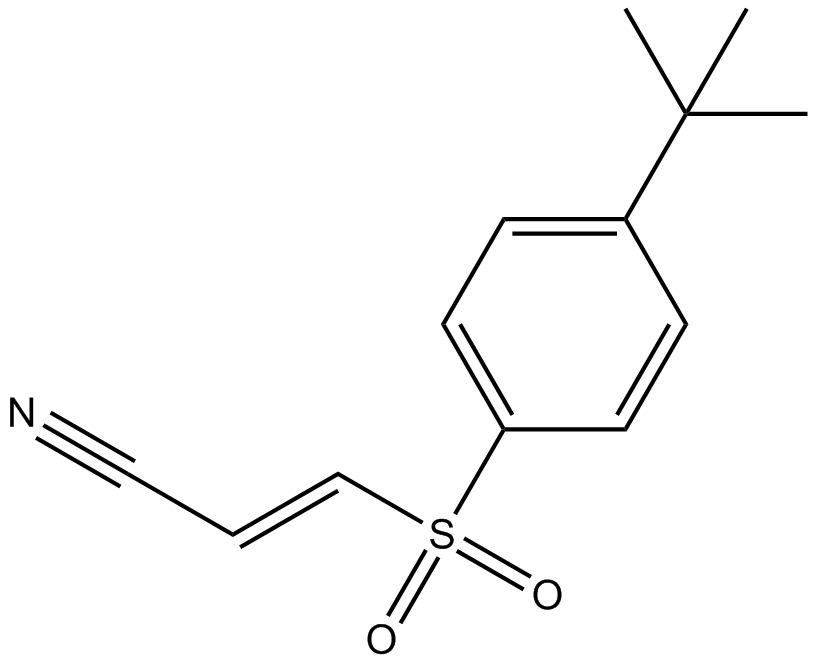
-
GC13035
Bay 11-7821
Un inhibiteur sélectif et irréversible de NF-κB
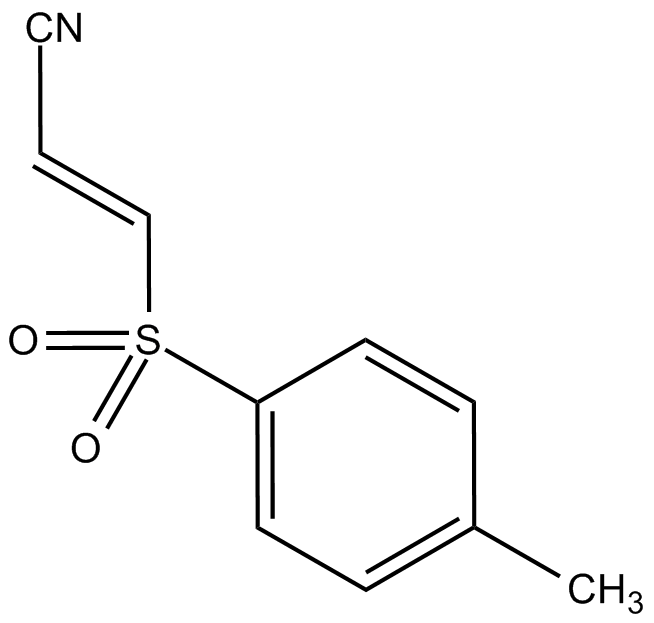
-
GC42897
BAY 61-3606 (hydrochloride)
BAY 61-3606 is a cell-permeable, reversible inhibitor of spleen tyrosine kinase (Syk; Ki = 7.5 nM; IC50 = 10 nM).
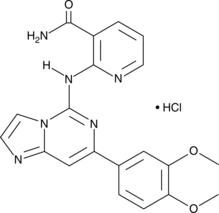
-
GC35474
Bay 65-1942 free base
La base libre Bay 65-1942 est un inhibiteur IKKβ compétitif et sélectif pour l'ATP.
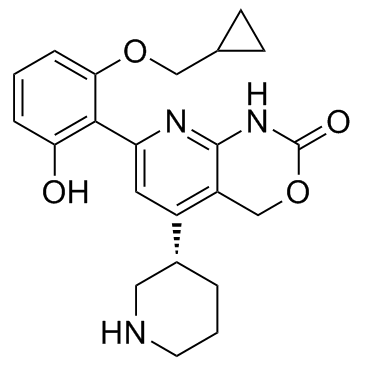
-
GC16303
Bay 65-1942 HCl salt
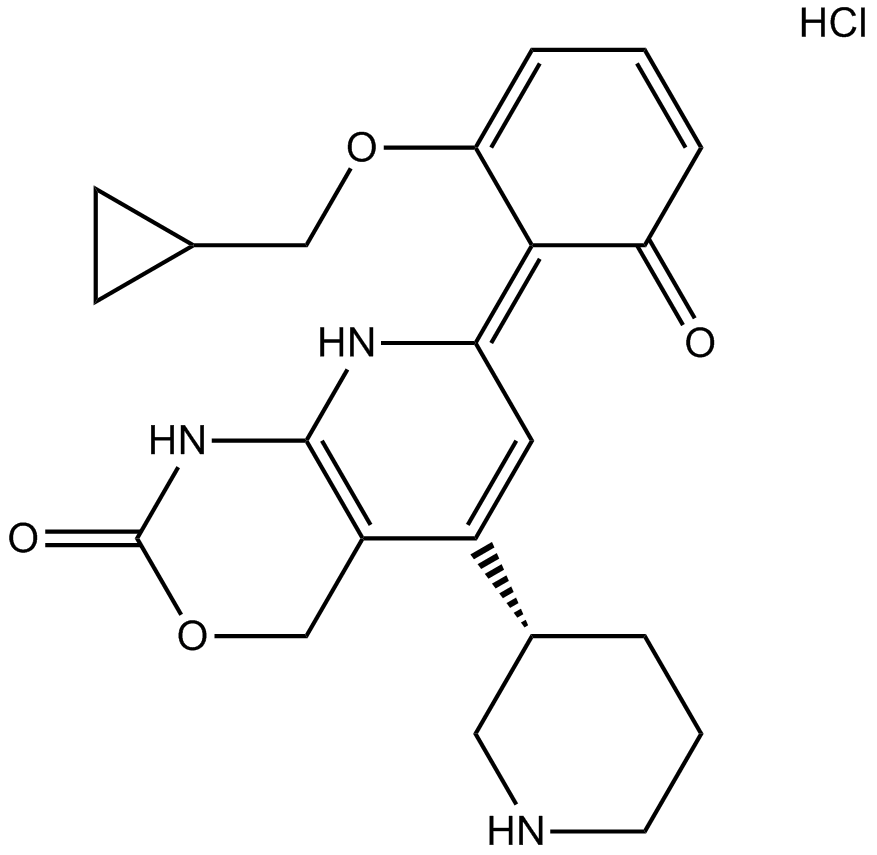
-
GC35475
Bay 65-1942 R form
La forme R de la baie 65-1942 est la forme R la moins active de la baie 65-1942.
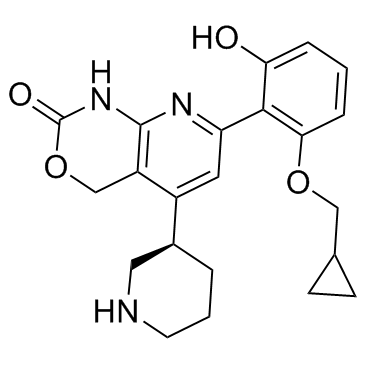
-
GC60624
BAY-985
BAY-985 est un double inhibiteur compétitif de TBK1 et IKKε hautement actif, oralement actif et sélectif avec des IC50 de 2/30 et 2 nM pour TBK1 (ATP faible/élevé) et IKKε, respectivement. Efficacité antitumorale.
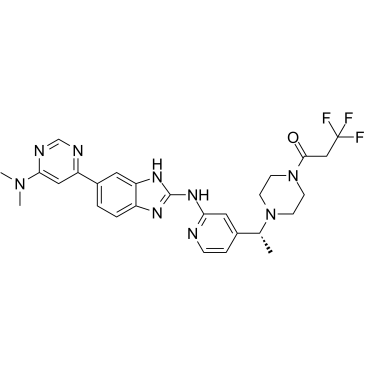
-
GC12232
BAY-X 1005
BAY-X 1005 (BAY X 1005; DG-031) est un inhibiteur de la protéine activatrice de la 5-lipoxygénase (FLAP) actif et sélectif par voie orale.
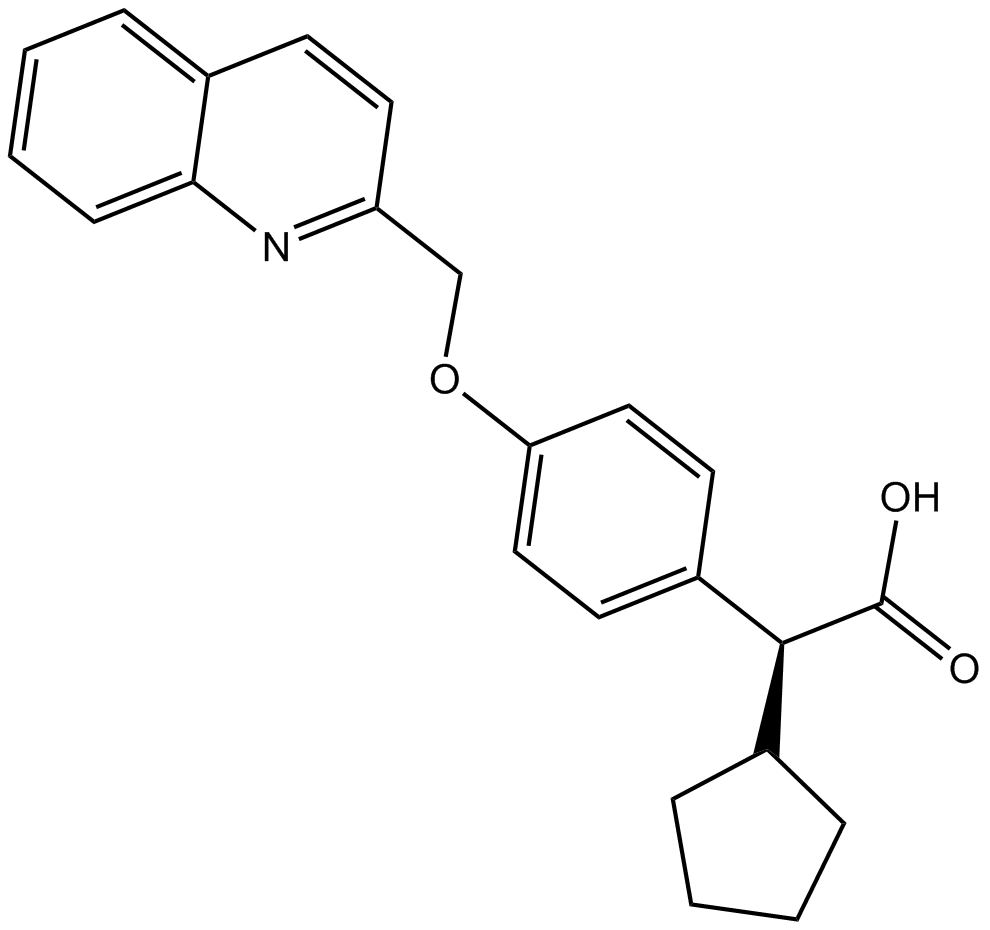
-
GC18487
BC-1215
BC-1215 est un inhibiteur de la protéine F-box 3 (Fbxo3).
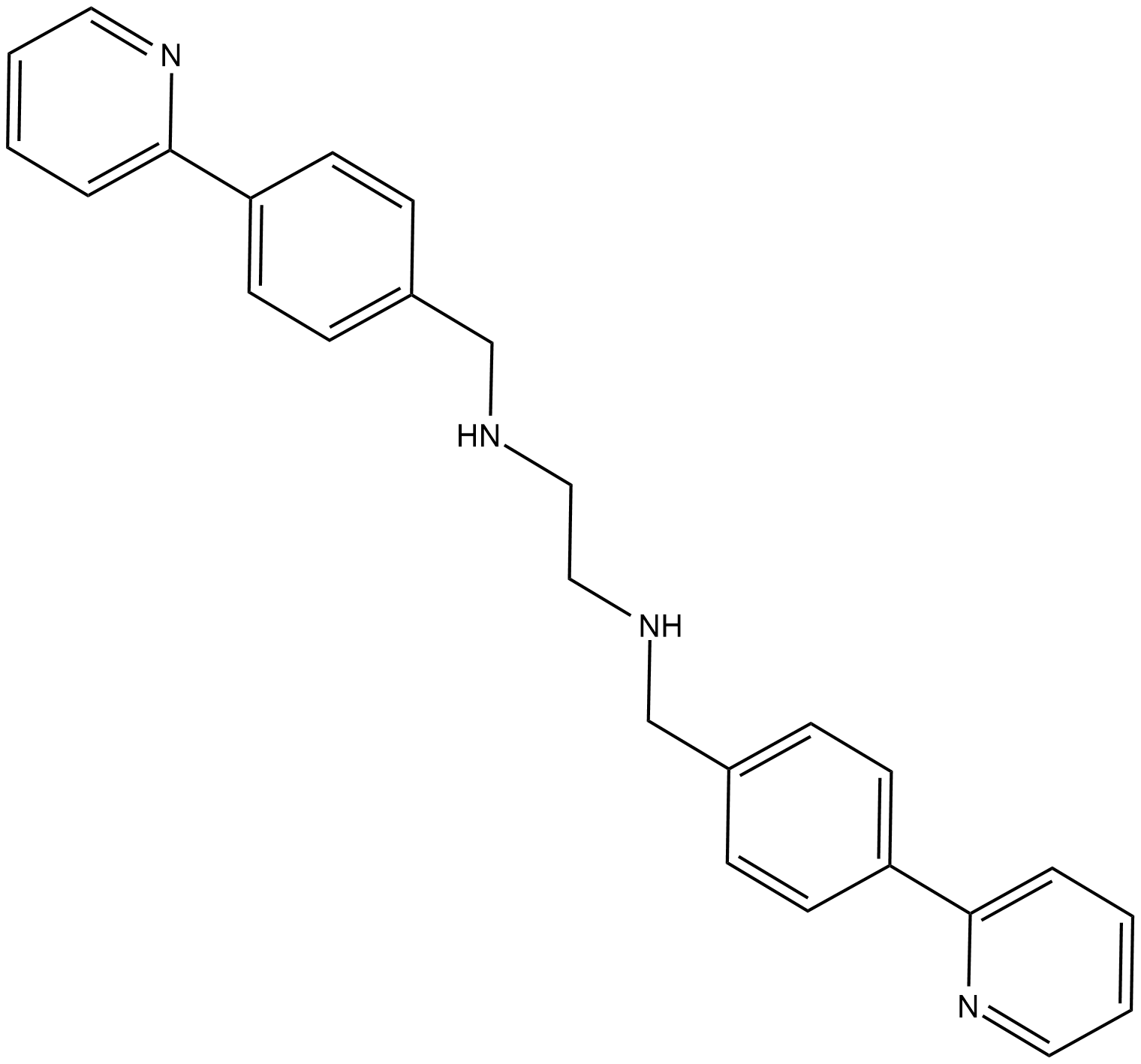
-
GC41583
BCN-E-BCN
BCN-E-BCN is a strained cycloalkyne probe for detecting proteins that have been sulfenylated, the first intermediate step in protein oxidation.

-
GC35481
BCX 1470
BCX 1470 inhibe l'activité estérolytique du facteur D (IC50 = 96 nM) et C1s (IC50 = 1,6 nM), respectivement 3,4 et 200 fois mieux que celle de la trypsine.
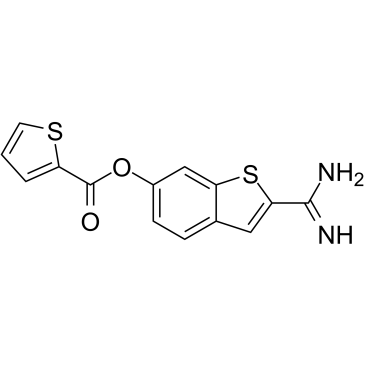
-
GC35482
BCX 1470 methanesulfonate
Le méthanesulfonate BCX 1470 inhibe l'activité estérolytique du facteur D (IC50 = 96 nM) et C1s (IC50 = 1,6 nM), respectivement 3,4 et 200 fois mieux que celle de la trypsine.
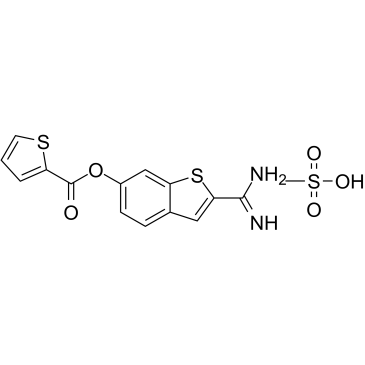
-
GC46908
BE-24566B
A fungal metabolite
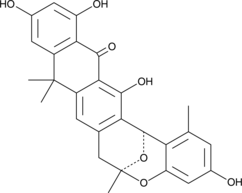
-
GC46910
Beauvericin A
A cyclodepsipeptide with diverse biological activities
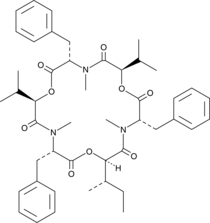
-
GC49038
Benanomicin A
A microbial metabolite with antifungal, fungicidal, and antiviral activities
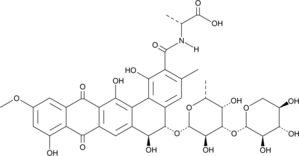
-
GC52468
Benanomicin B
A microbial metabolite with antifungal, fungicidal, and antiviral activities
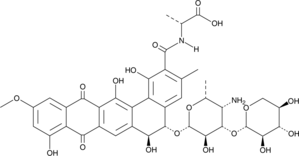
-
GC49040
Benanomicin B (formate)
A microbial metabolite with antifungal, fungicidal, and antiviral activities
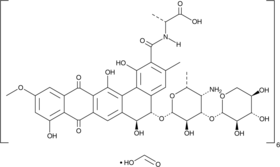
-
GC49042
Benastatin A
A bacterial metabolite with diverse biological activities
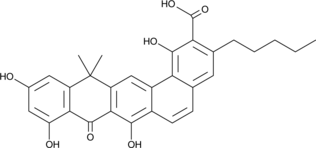
-
GC49043
Benastatin B
A bacterial metabolite with diverse biological activities
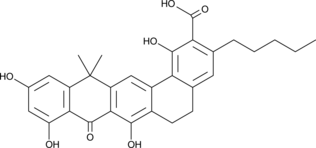
-
GC49044
Benastatin C
A bacterial metabolite with diverse biological activities
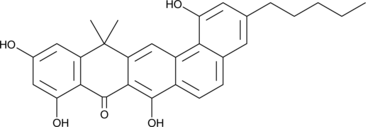
-
GC64354
Bendamustine
La bendamustine (base libre SDX-105), un analogue purique, est un agent de réticulation de l'ADN. La bendamustine active la réponse au stress et l'apoptose des dommages À l'ADN. La bendamustine possède de puissantes propriétés alkylantes, anticancéreuses et antimétabolites.
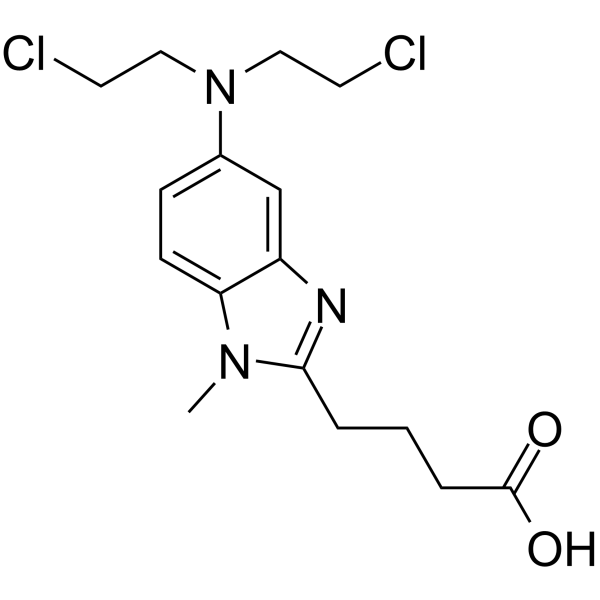
-
GC34046
Bendazol
Le bendazol est un médicament hypotenseur qui peut également augmenter l'activité de la NO synthase dans les glomérules rénaux et les tubules collecteurs.
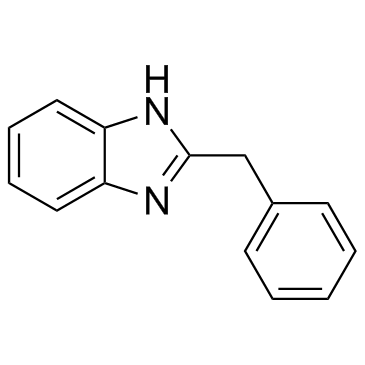
-
GC15949
Benfotiamine
A lipid-soluble form of vitamin B1
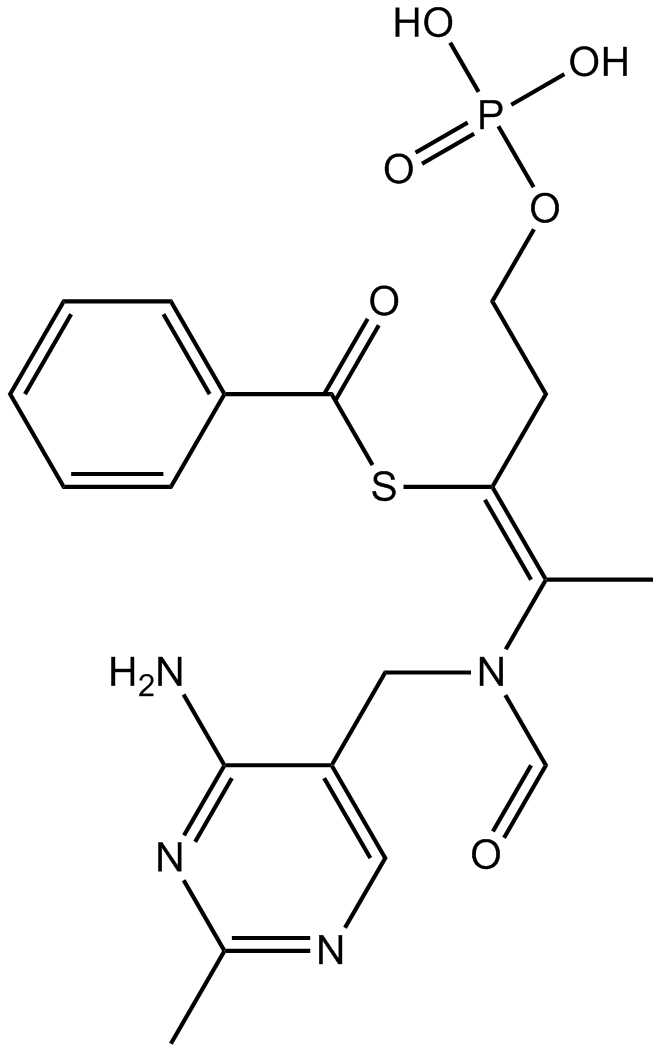
-
GC49836
Benoxaprofen
Le bénoxaprofène (LRCL 3794) est un composé anti-inflammatoire et antipyrétique puissant et À longue durée d'action.

-
GC39346
Benralizumab
Le benralizumab (MEDI-563) est un anticorps monoclonal cytolytique dirigé contre le récepteur de l'interleukine-5 α (IL-5Rα) qui induit une déplétion directe, rapide et presque complète des éosinophiles via une cytotoxicité renforcée À médiation cellulaire dépendante des anticorps.

-
GC35494
Benzoyloxypaeoniflorin
La benzoyloxypaeoniflorine, isolée de la racine de Paeonia suffruticosa, est un inhibiteur de tyrosinase contre la tyrosinase de champignon avec une IC50 de 0,453 mM.
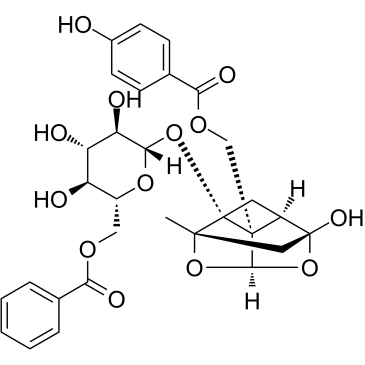
-
GC15058
Benzydamine HCl
Le chlorhydrate de benzydamine est un anti-inflammatoire non stéroÏdien À action locale doté de propriétés anesthésiques et analgésiques locales; se lie sélectivement À la prostaglandine synthétase et possède une activité antibactérienne in vitro notable.
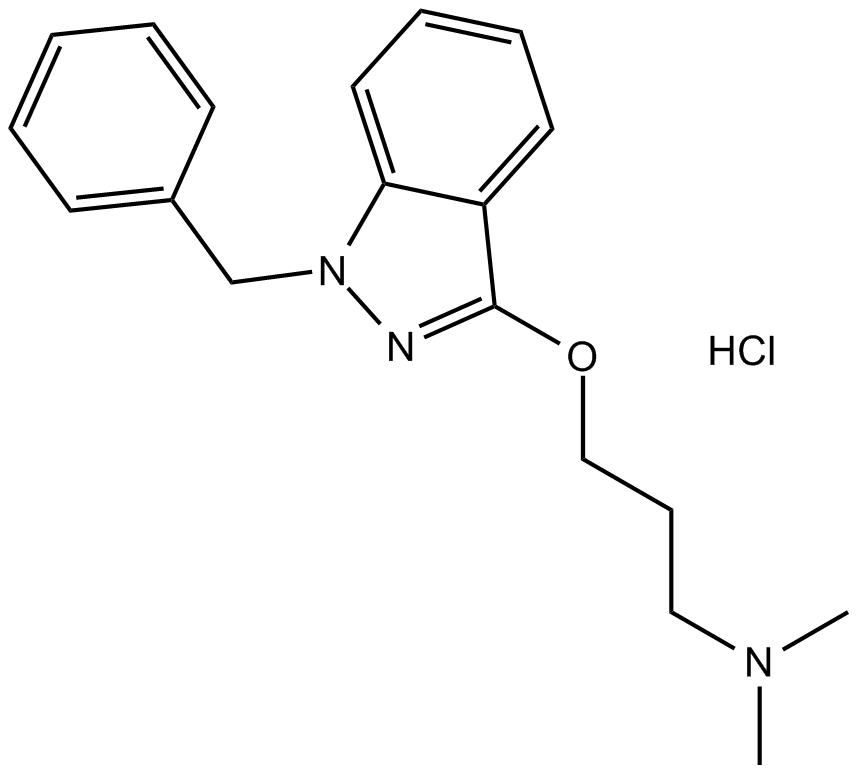
-
GC60636
Benzyl butyl phthalate
Le phtalate de benzyle et de butyle, membre des esters d'acide phtalique (PAE), peut déclencher la migration et l'invasion des cellules d'hémangiome (HA) via la régulation À la hausse de Zeb1. Le phtalate de benzyle et de butyle active le récepteur des arylhydrocarbures (AhR) dans les cellules cancéreuses du sein pour stimuler la signalisation SPHK1/S1P/S1PR3 et améliore la formation de cellules souches du cancer du sein initiatrices de métastases (BCSC).

-
GN10443
Berbamine
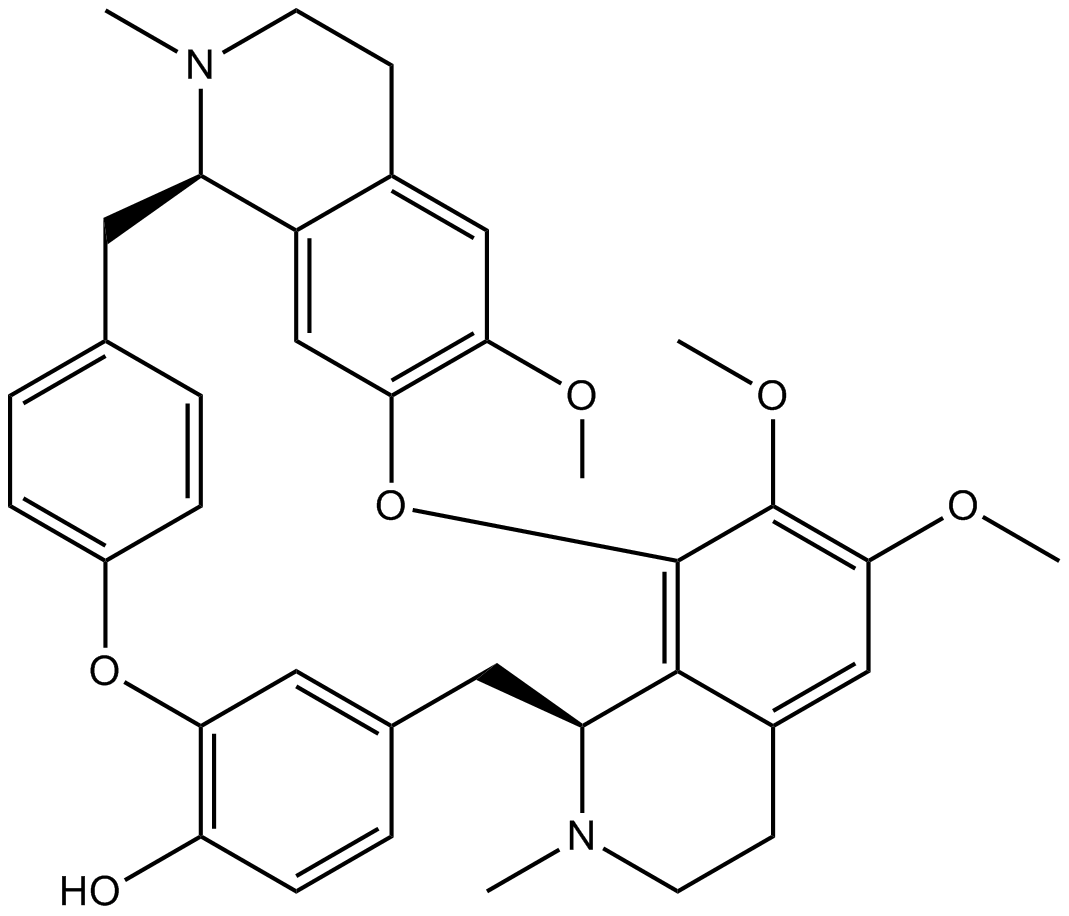
-
GN10358
Berbamine hydrochloride
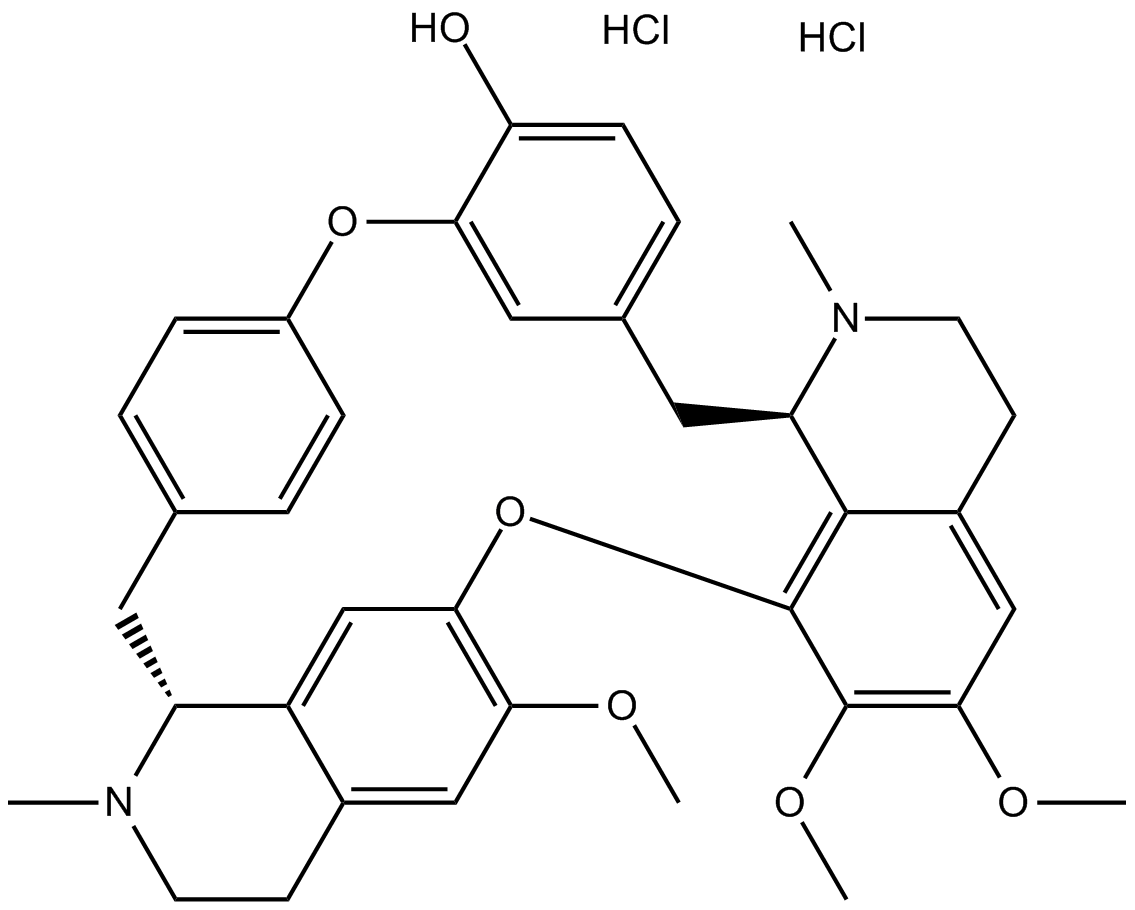
-
GN10221
Berberine
La berbérine (jaune naturel 18) est un alcaloïde isolé de la médecine traditionnelle chinoise Huanglian, utilisé comme antibiotique. La berbérine (jaune naturel 18) induit la génération d'espèces réactives de l'oxygène (ROS) et inhibe la topoisomérase de l'ADN.
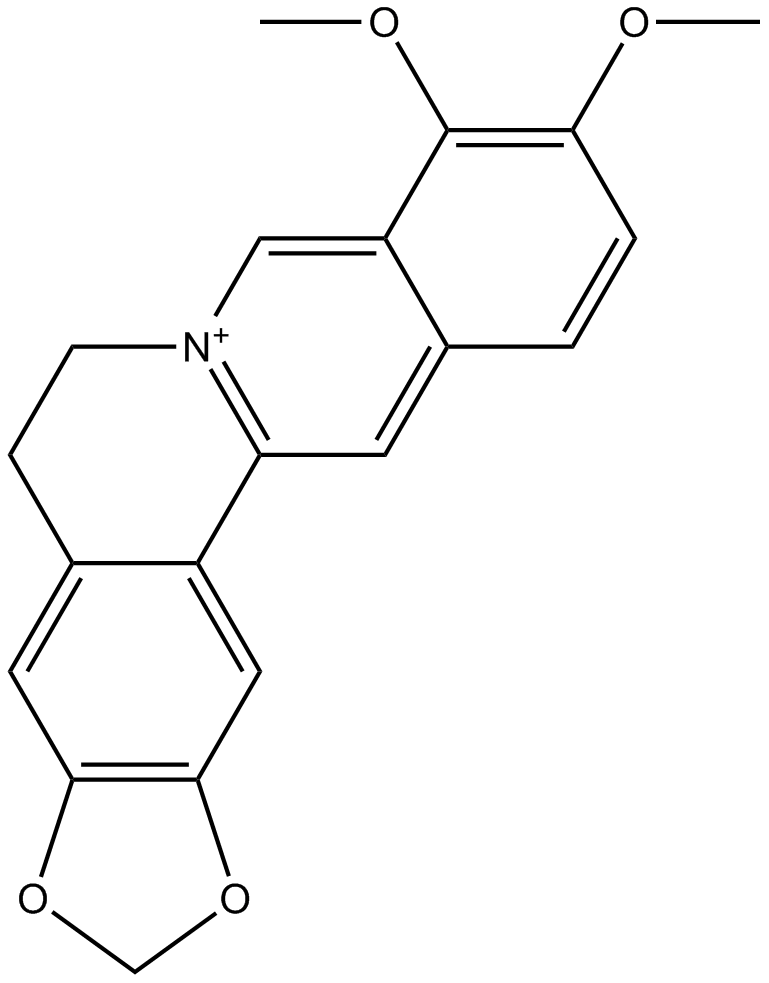
-
GC35497
Berberine chloride hydrate
Le chlorure de berbérine hydraté (chlorure hydraté de jaune naturel 18) est un alcaloÏde qui agit comme un antibiotique. Le chlorure de berbérine hydraté induit la génération d'espèces réactives de l'oxygène (ROS) et inhibe l'ADN topoisomérase. Propriétés antinéoplasiques.
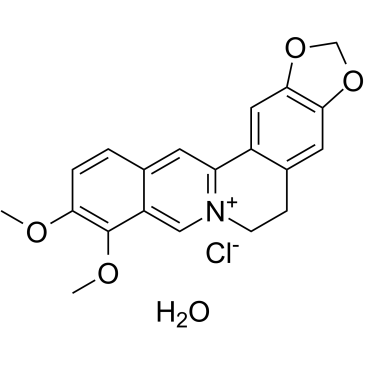
-
GN10208
Berberine hydrochloride
Berberine hydrochloride is an isoquinoline alkaloid derived from the Ranunculaceae medicinal plant Coptis chinensis. It has various pharmacological activities such as anti-tumor, anti-inflammatory, and hypoglycemic activities.
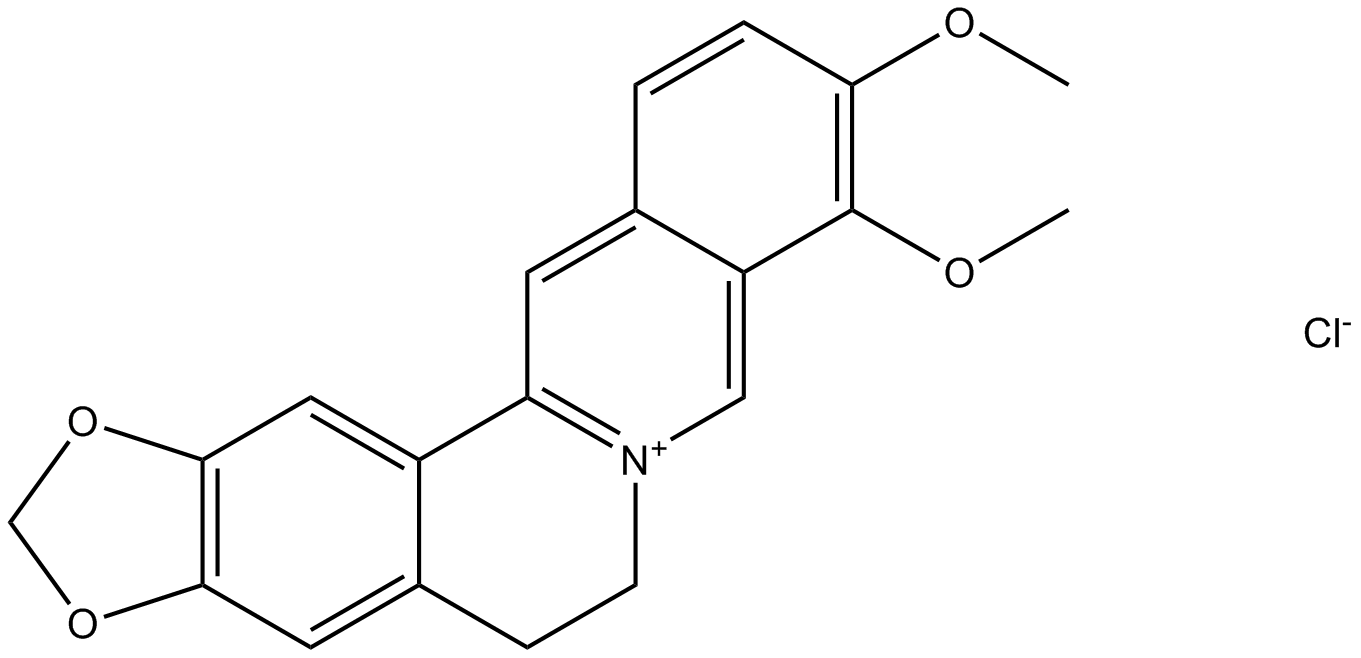
-
GN10523
Berberine Sulfate
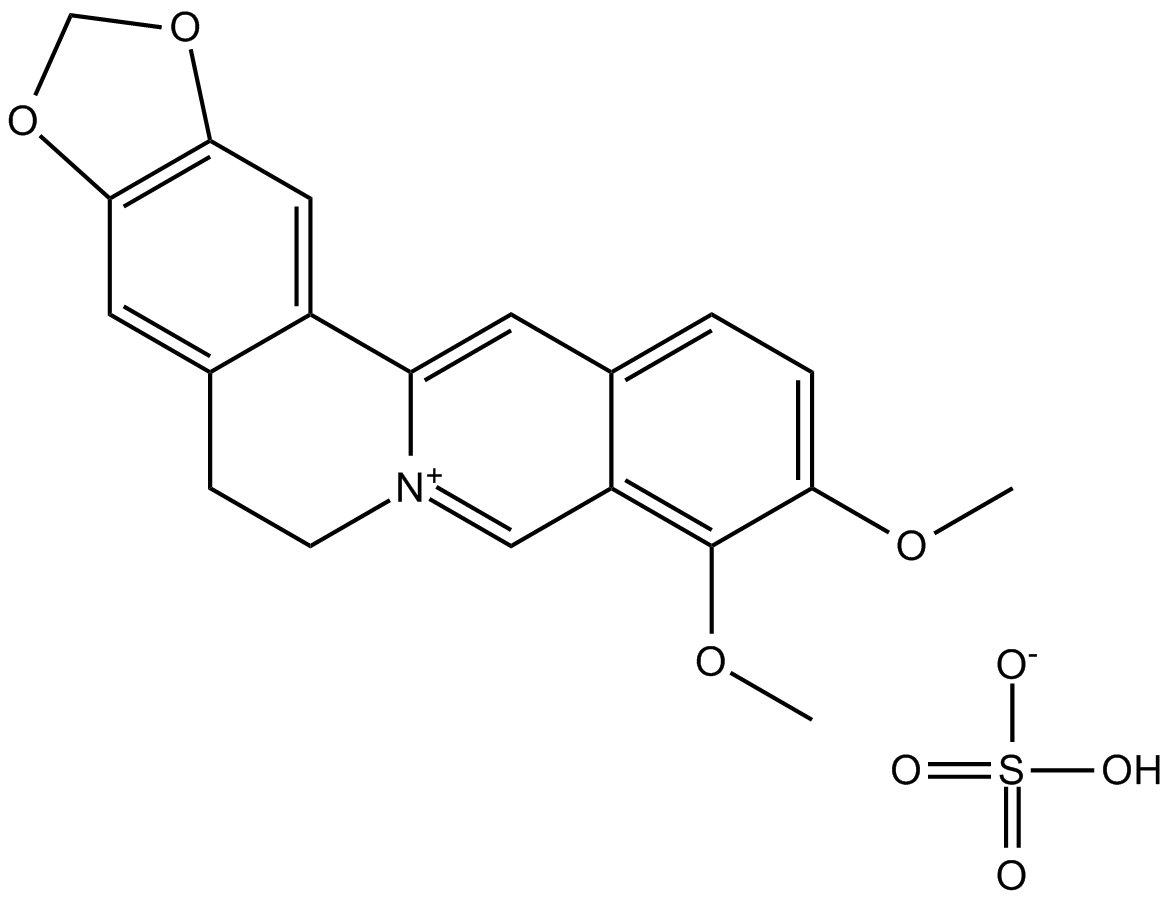
-
GC49387
Berberine-d6 (chloride)
An internal standard for the quantification of berberine
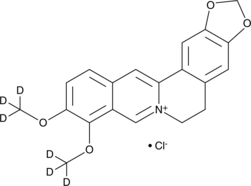
-
GC46098
Berkeleylactone E
A macrolide antibiotic
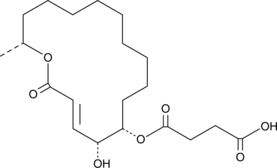
-
GC42925
Berteroin
La bertéroÏne, un analogue naturel du sulforaphane, est un agent antimétastatique.

-
GC46922
Betamethasone 21-phosphate (sodium salt hydrate)
A synthetic glucocorticoid
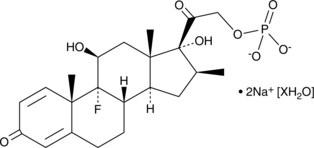
-
GC52329
Betamethasone-d5
An internal standard for the quantification of betamethasone
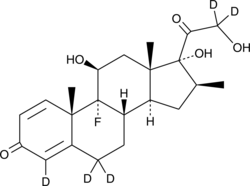
-
GC10480
Betulinic acid
A plant triterpenoid similar to bile acids
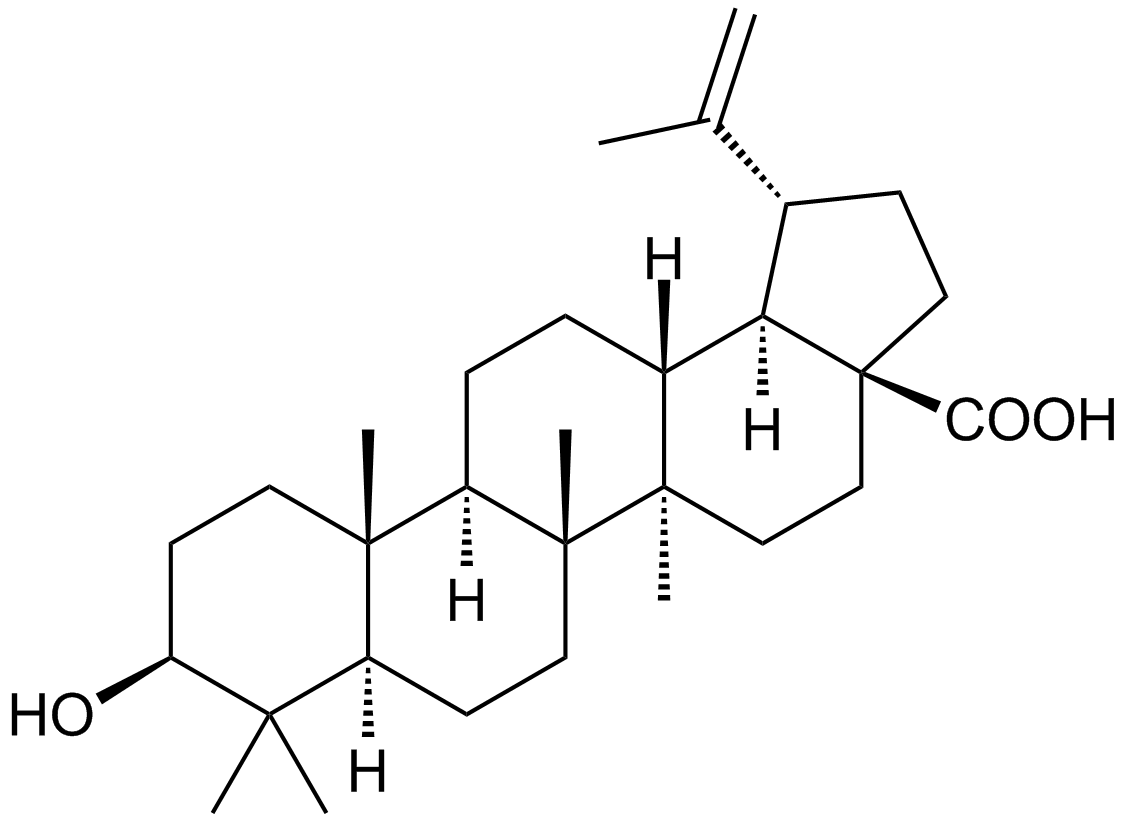
-
GC48504
Betulinic Aldehyde oxime
A derivative of betulin
